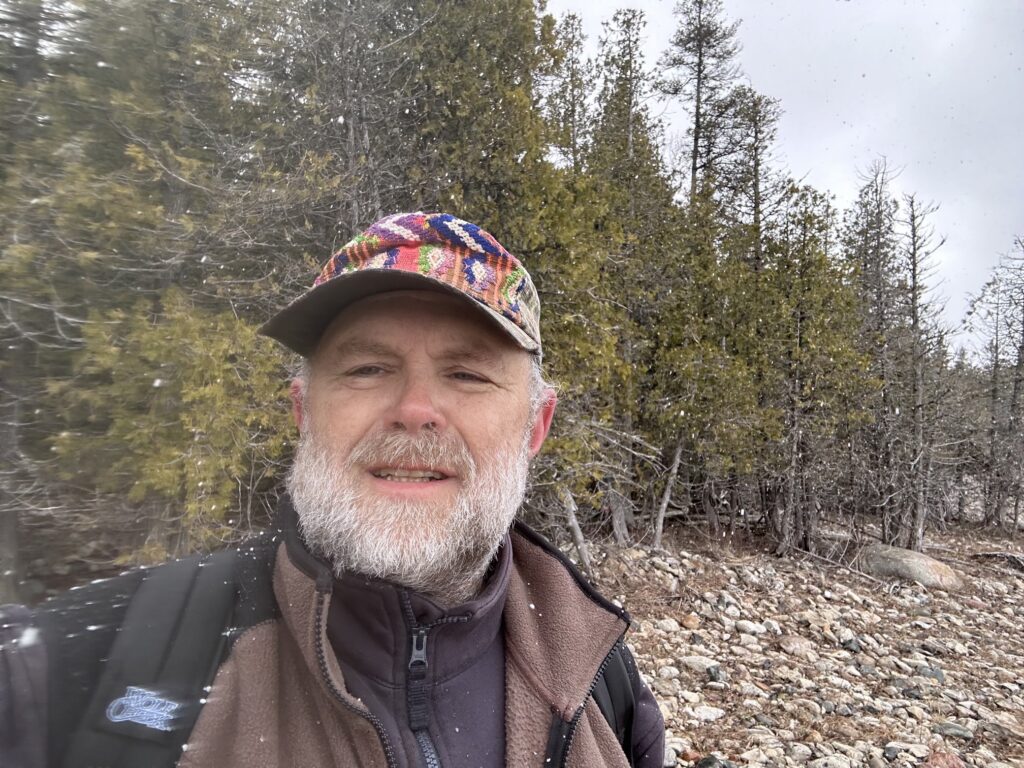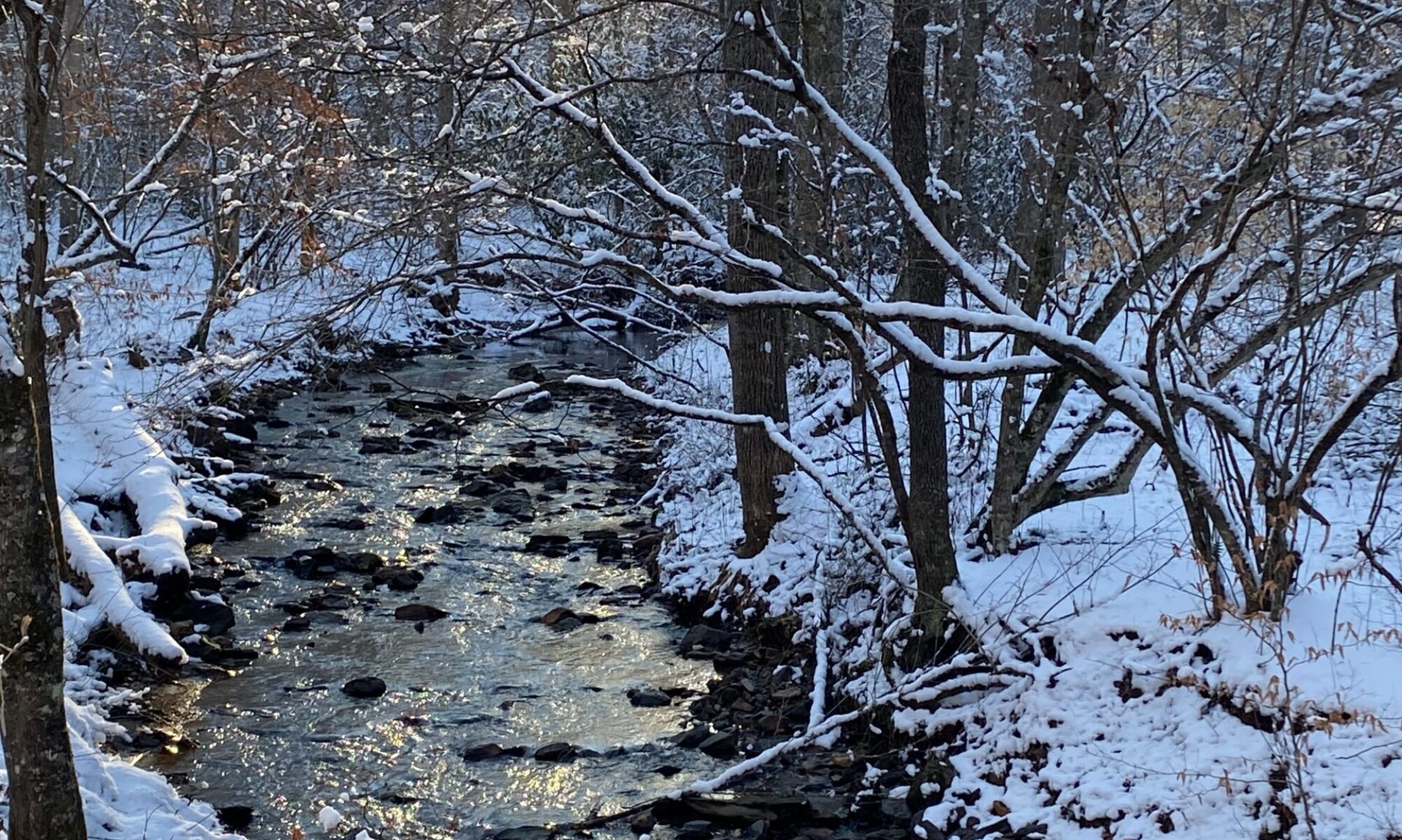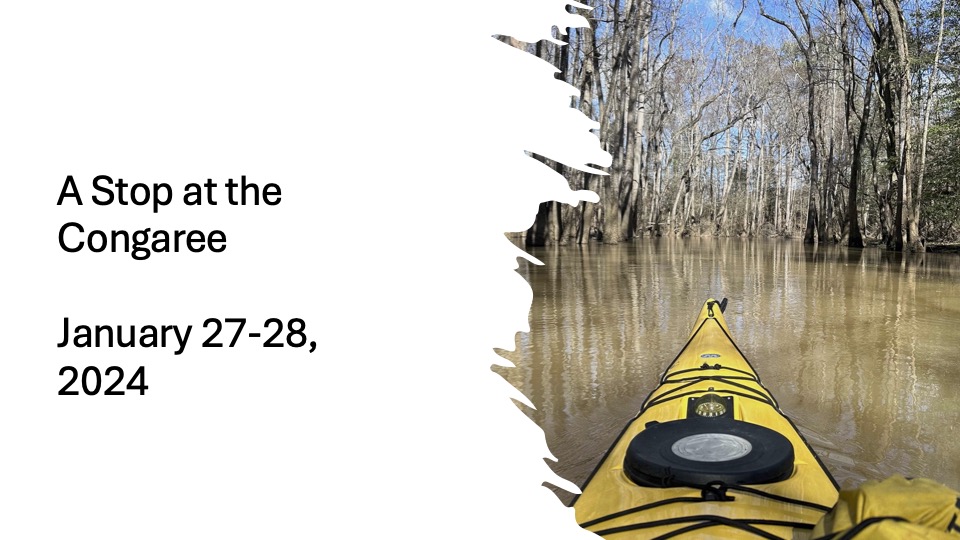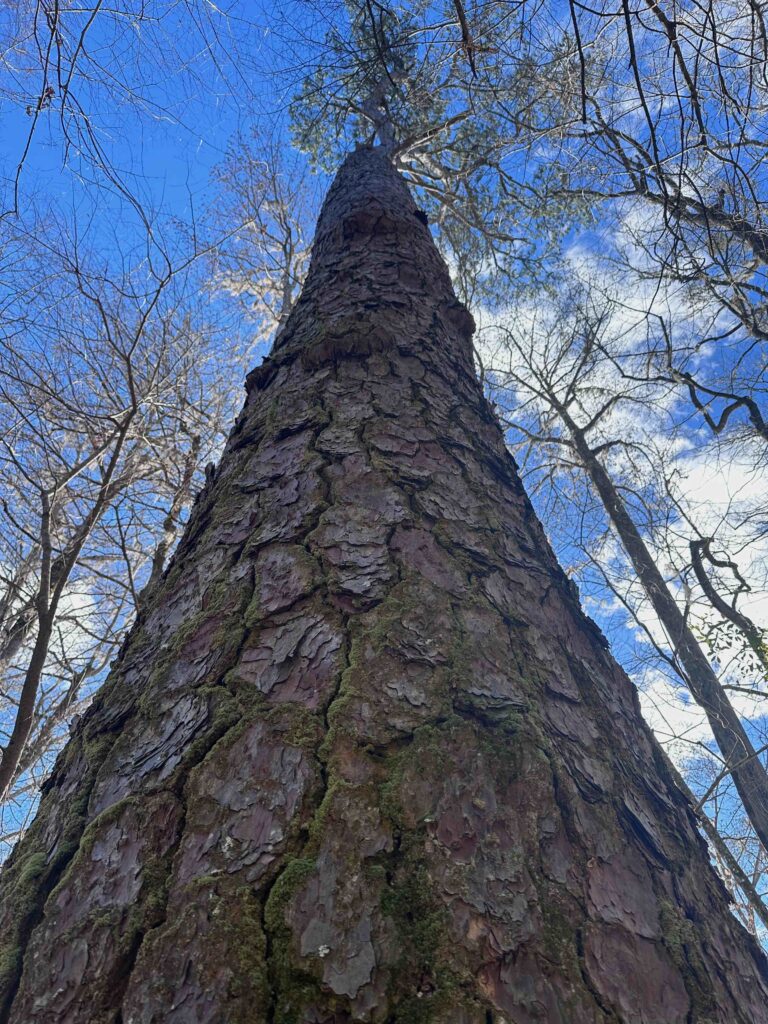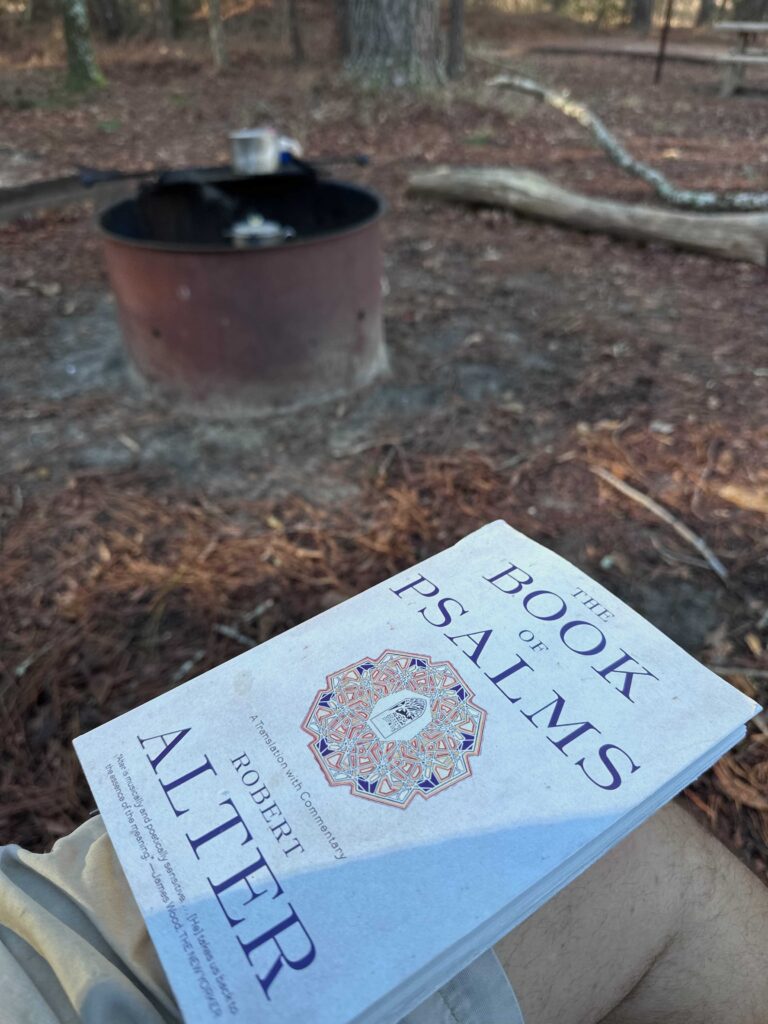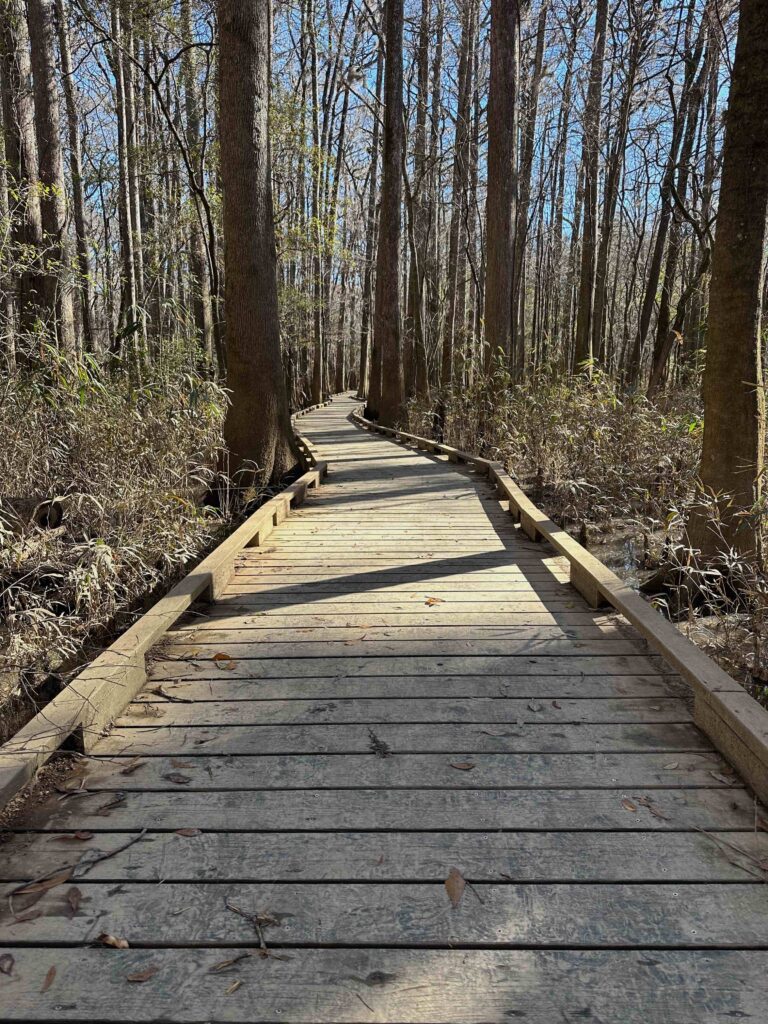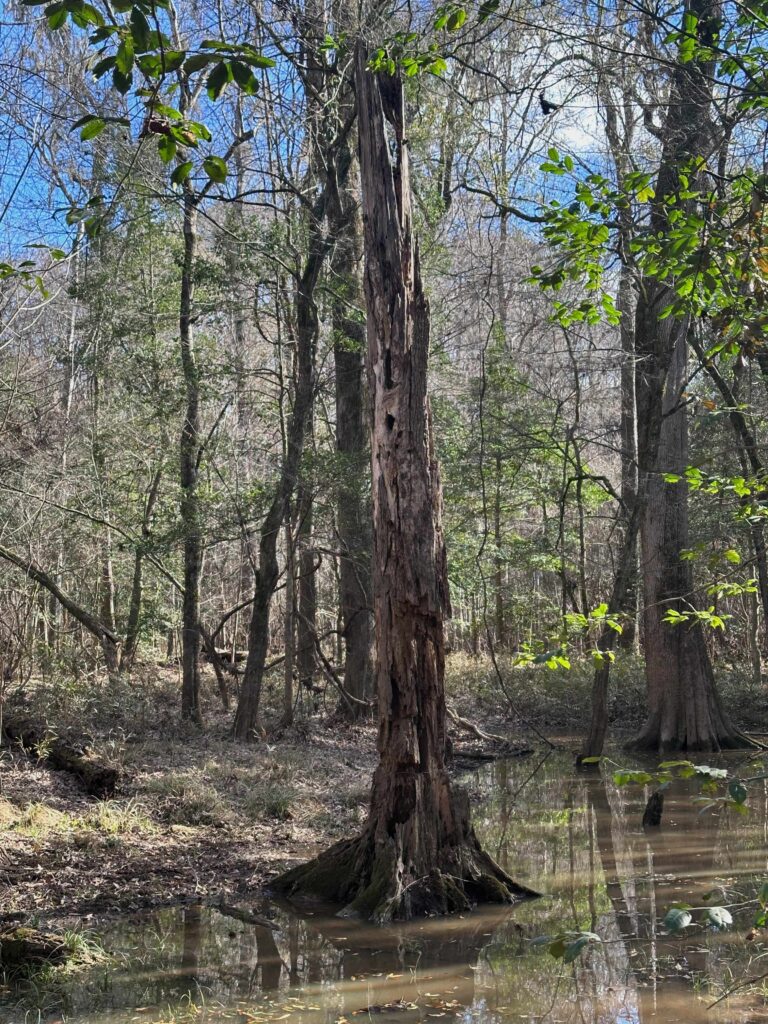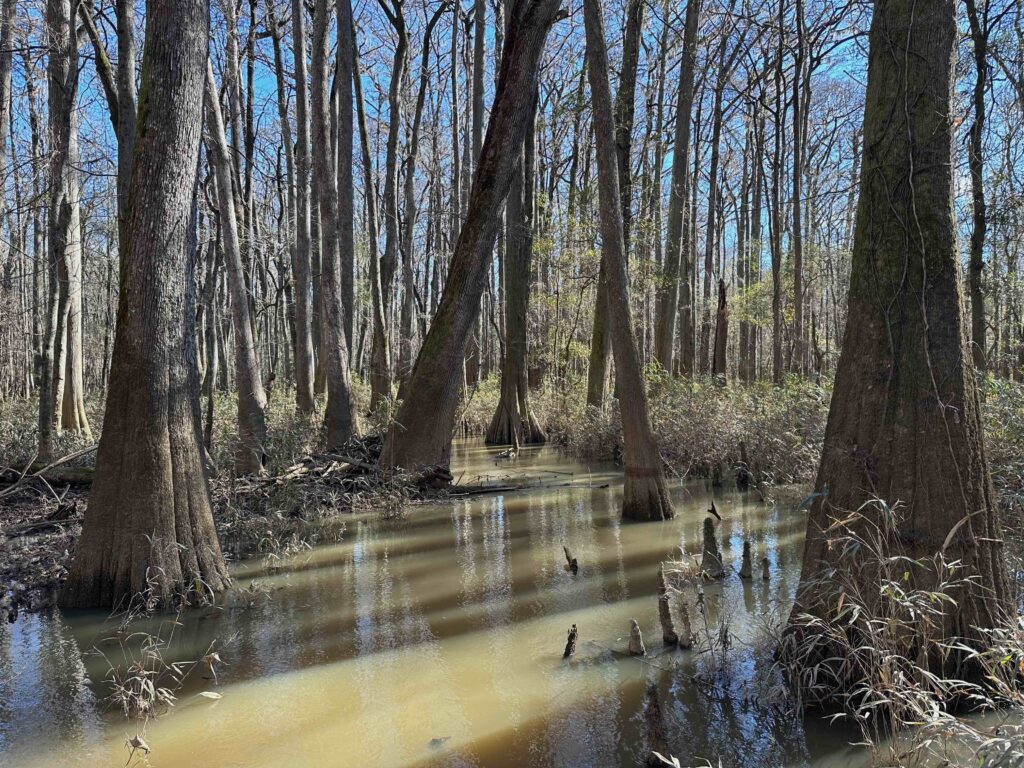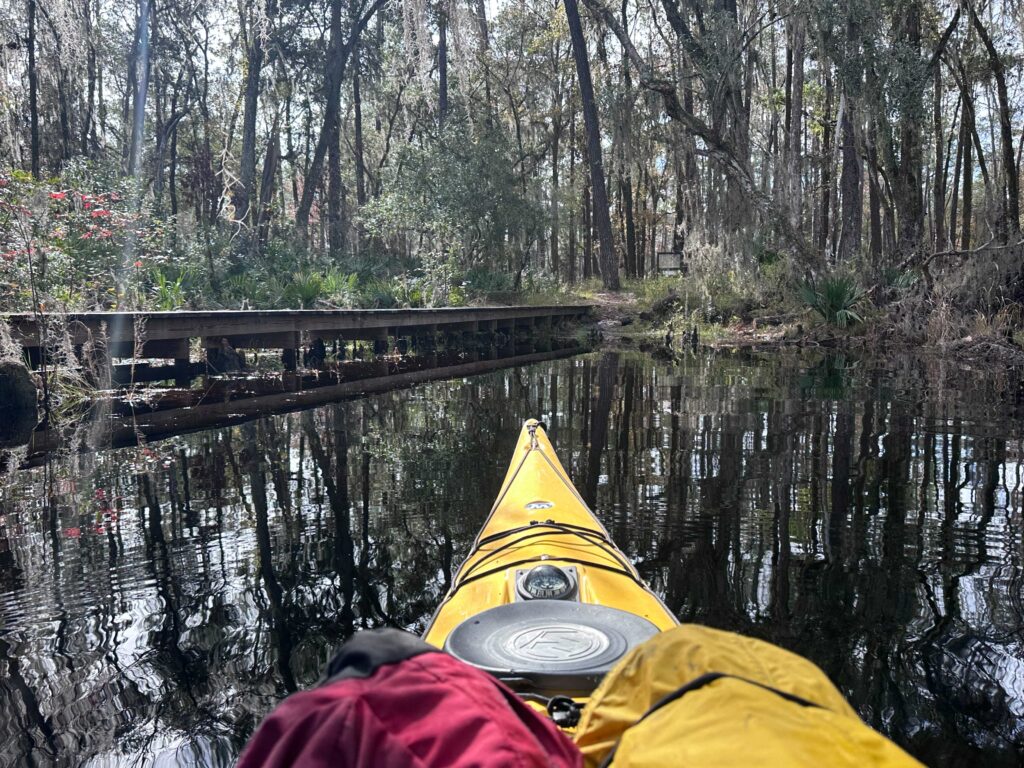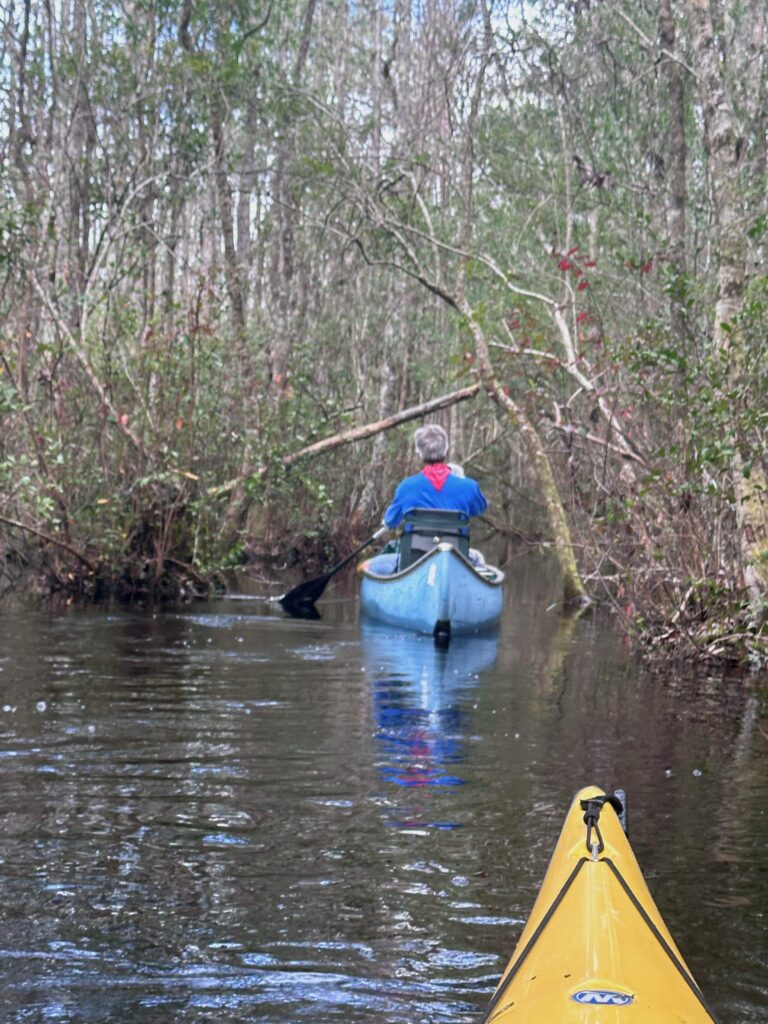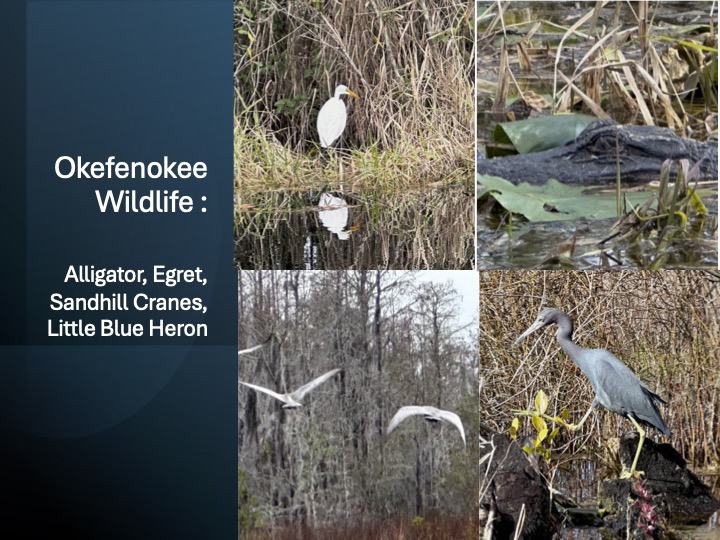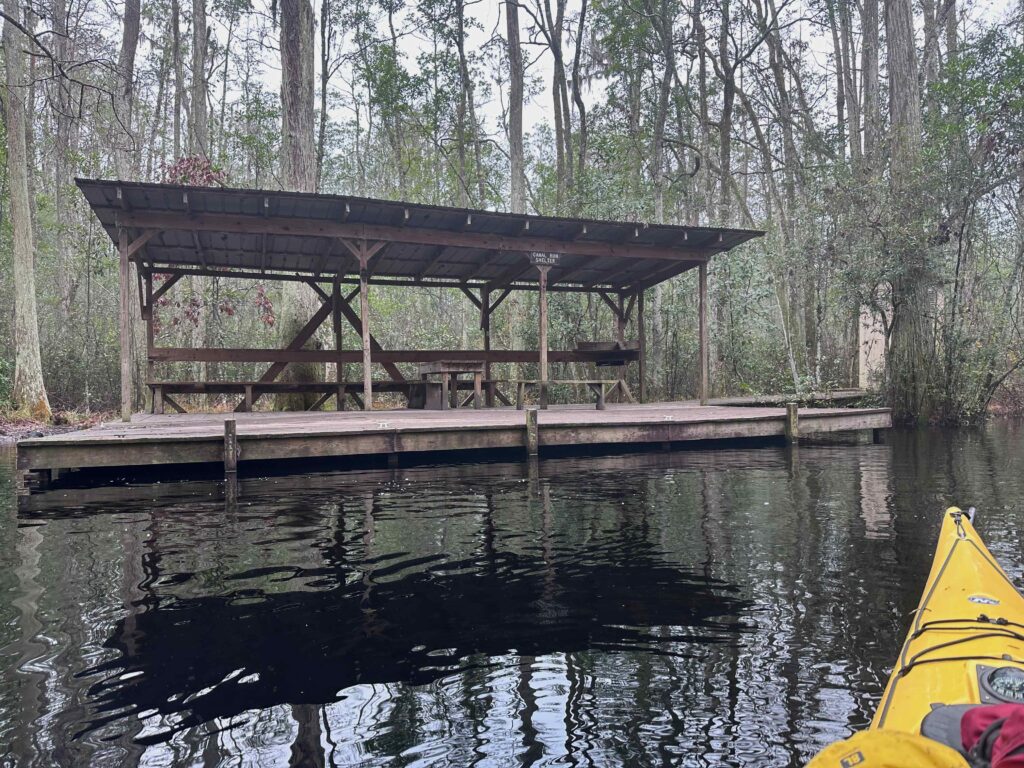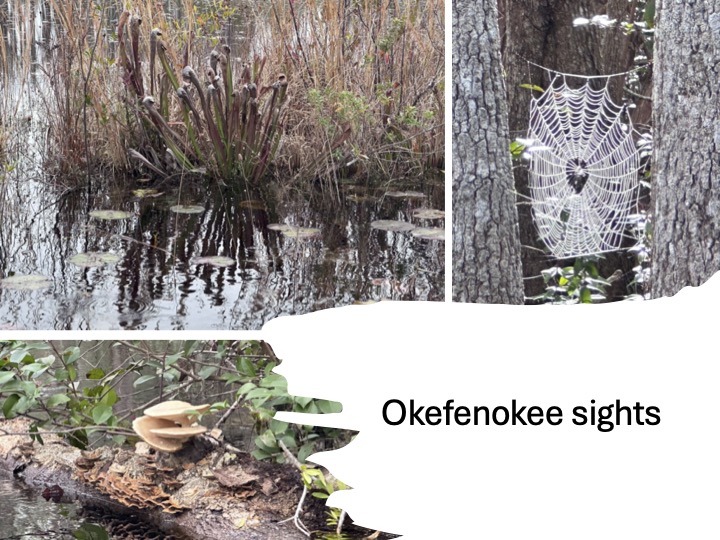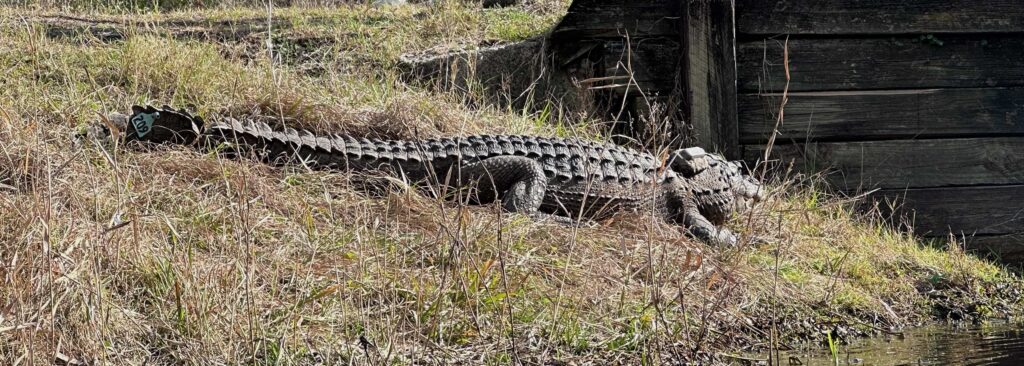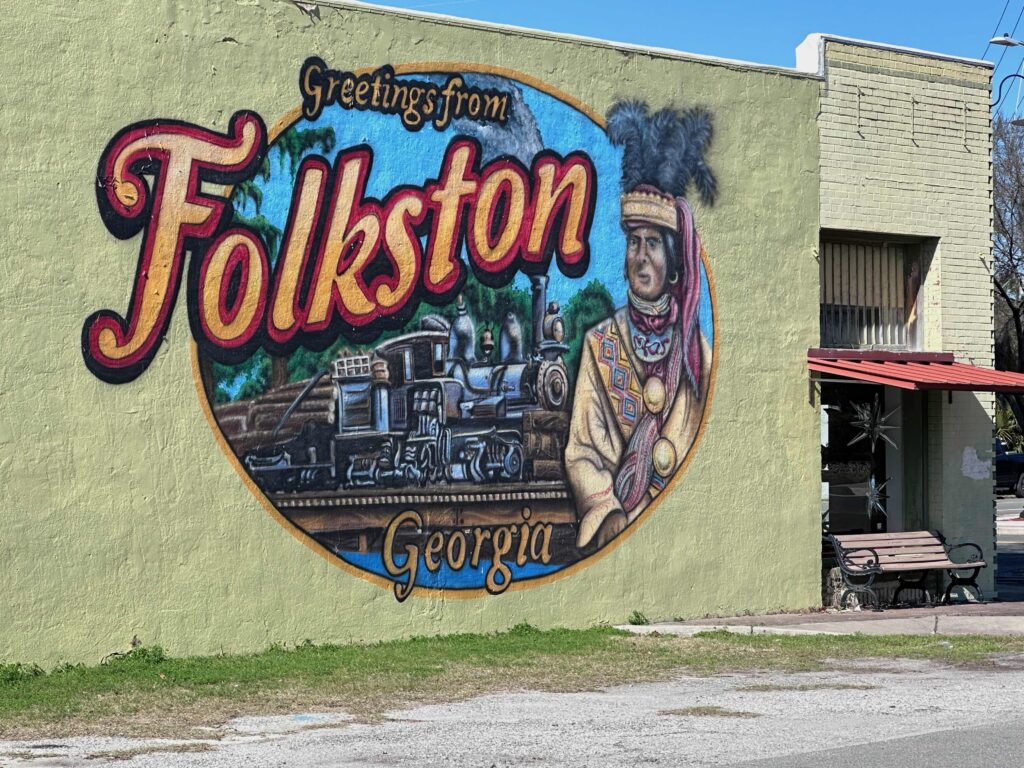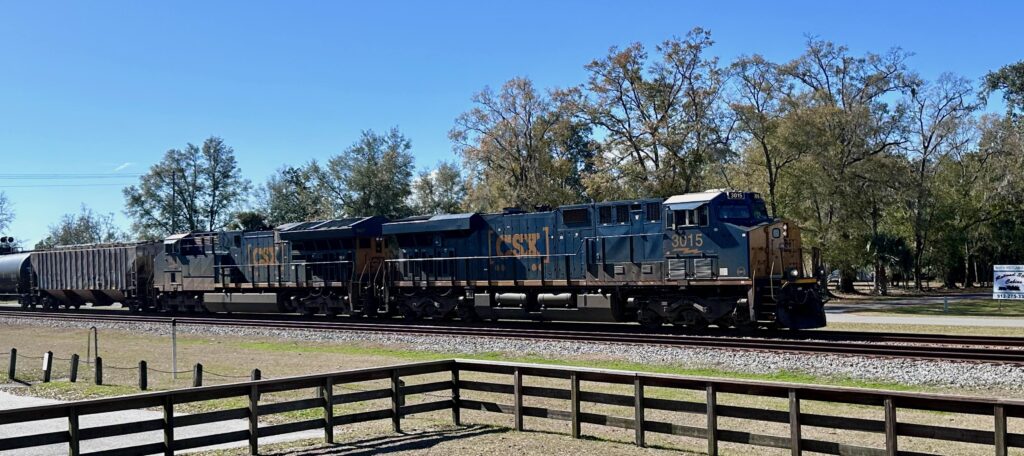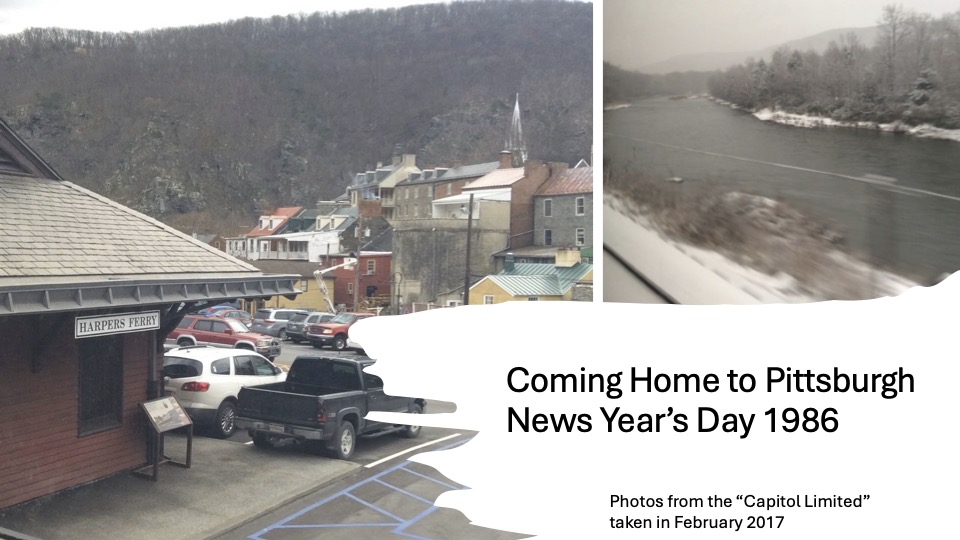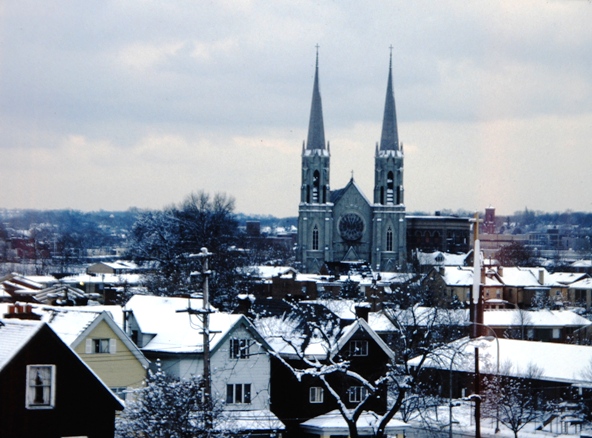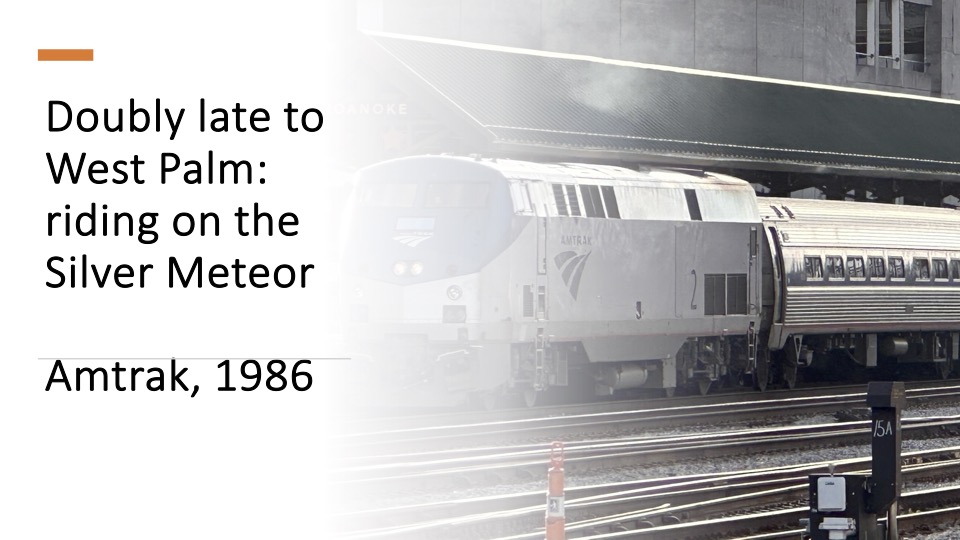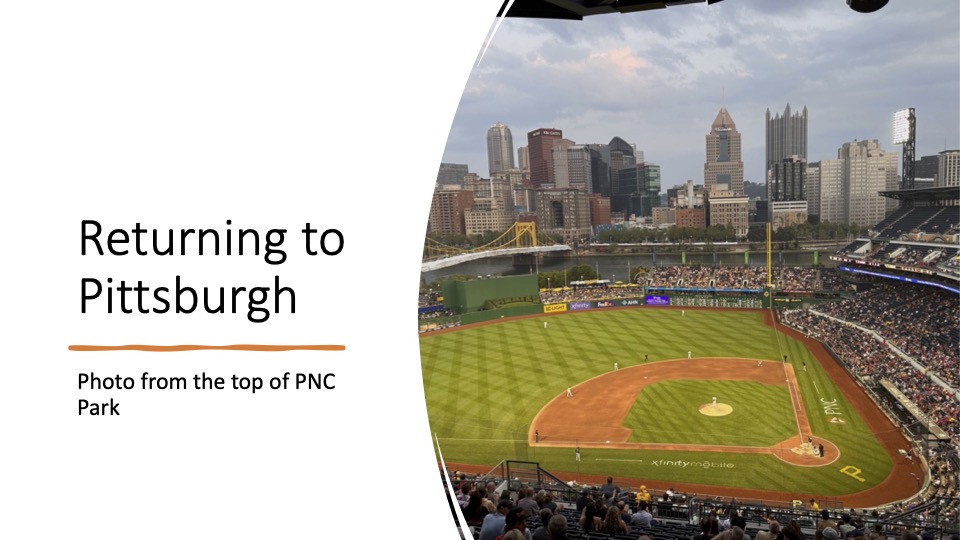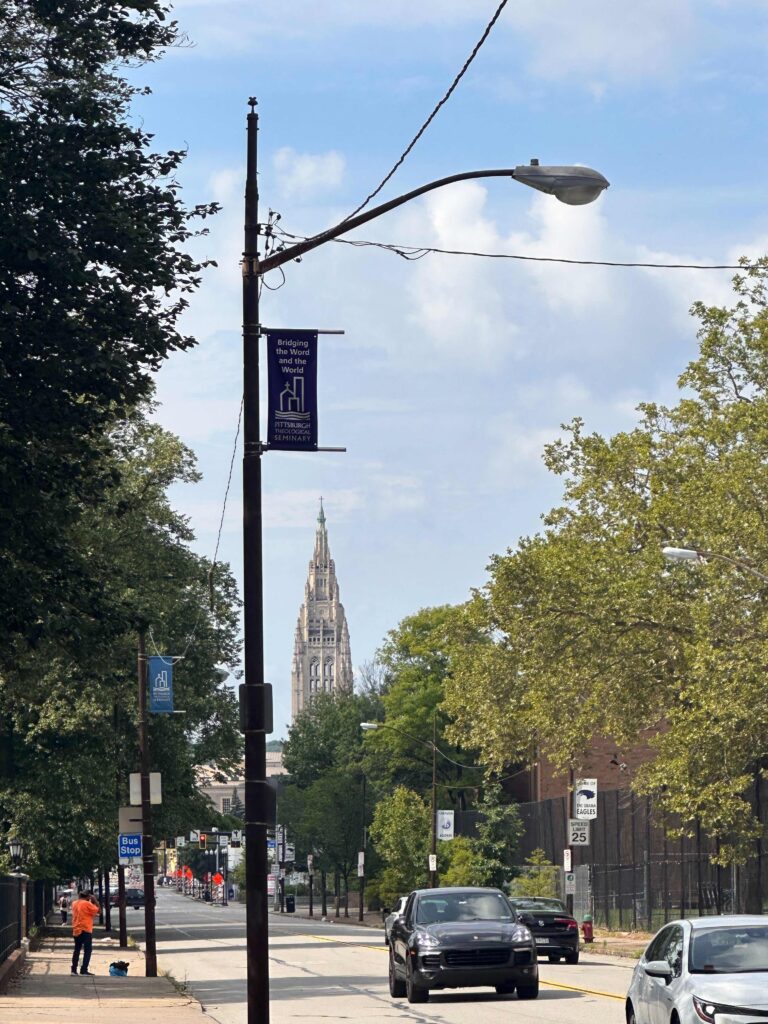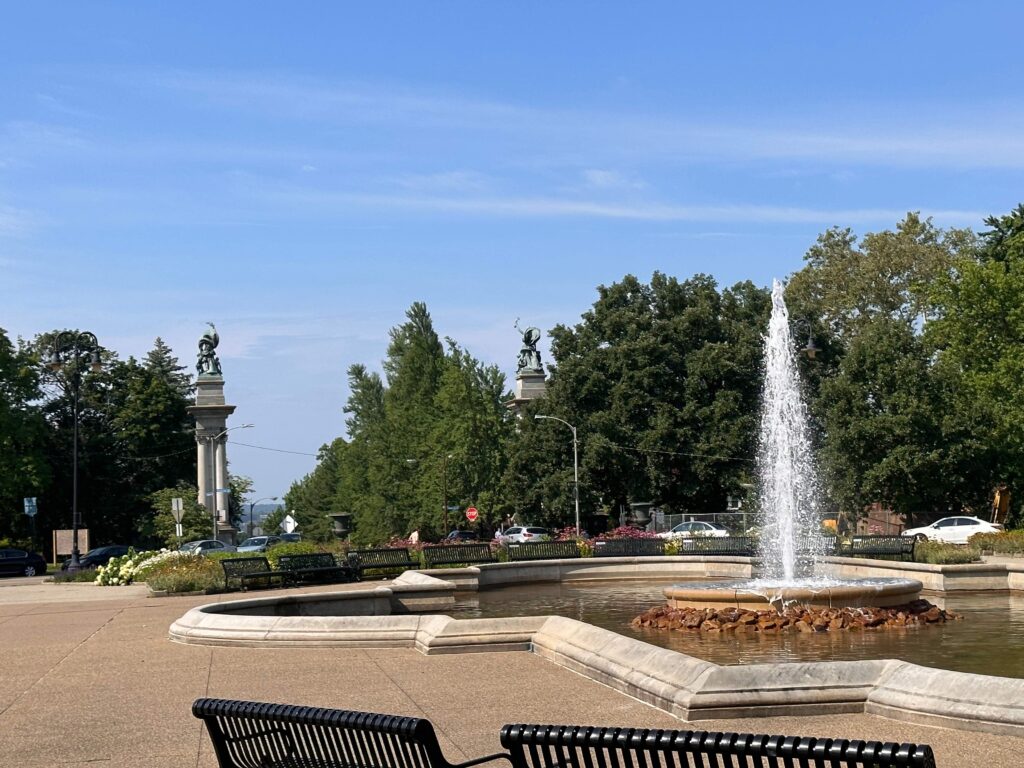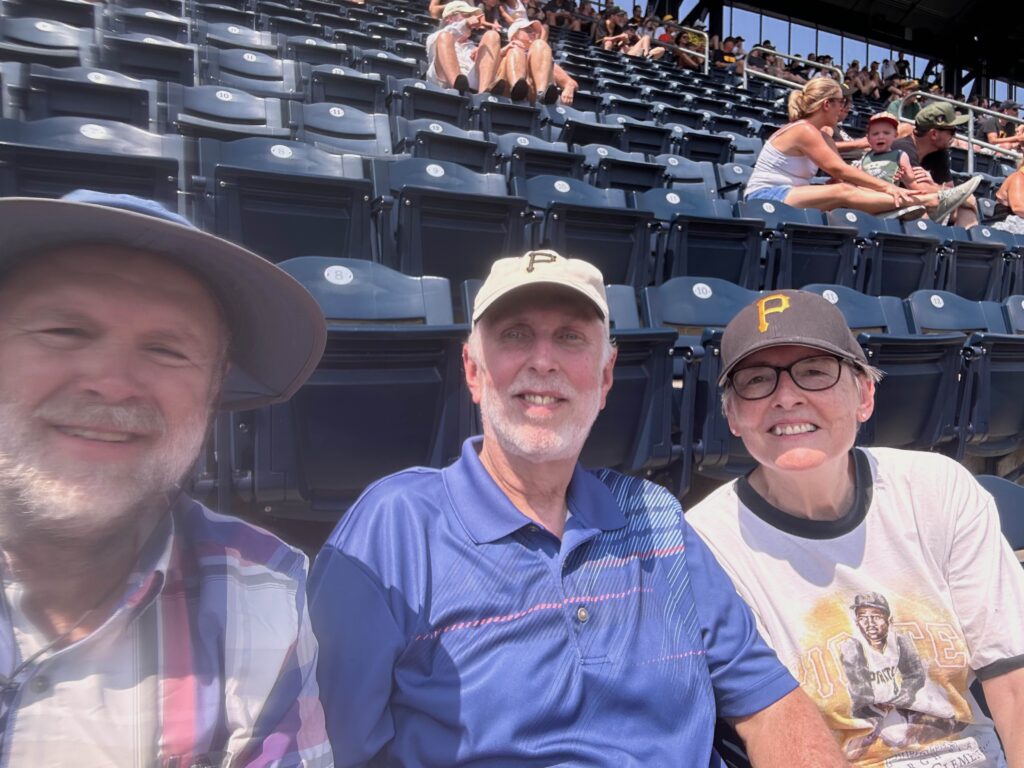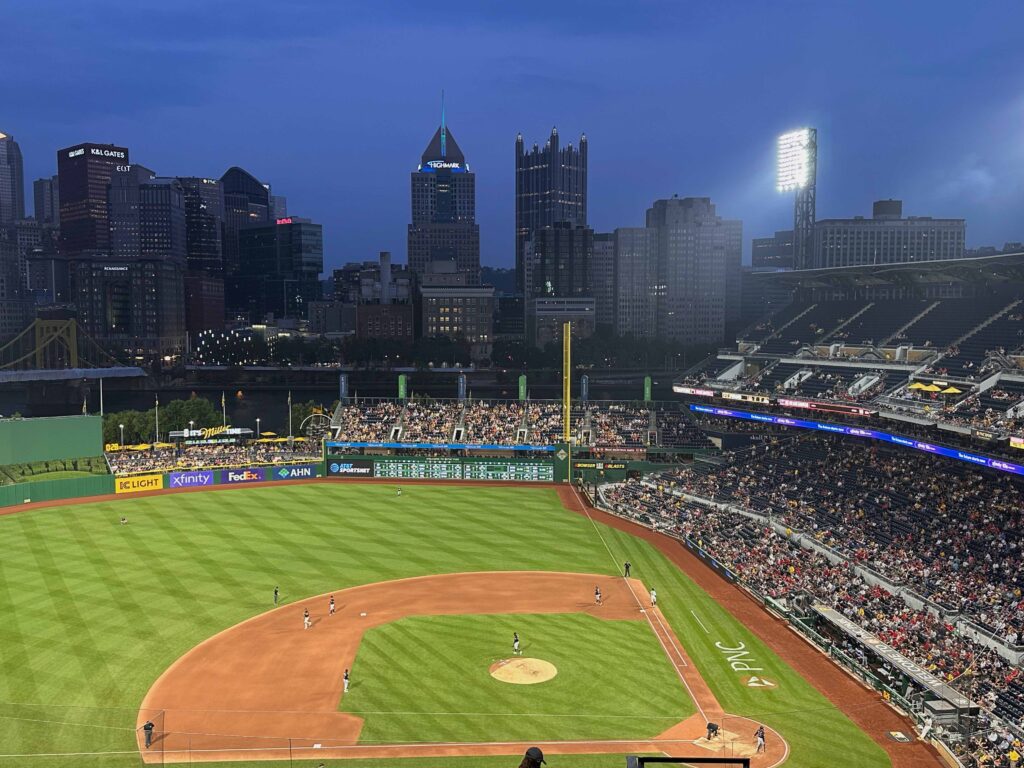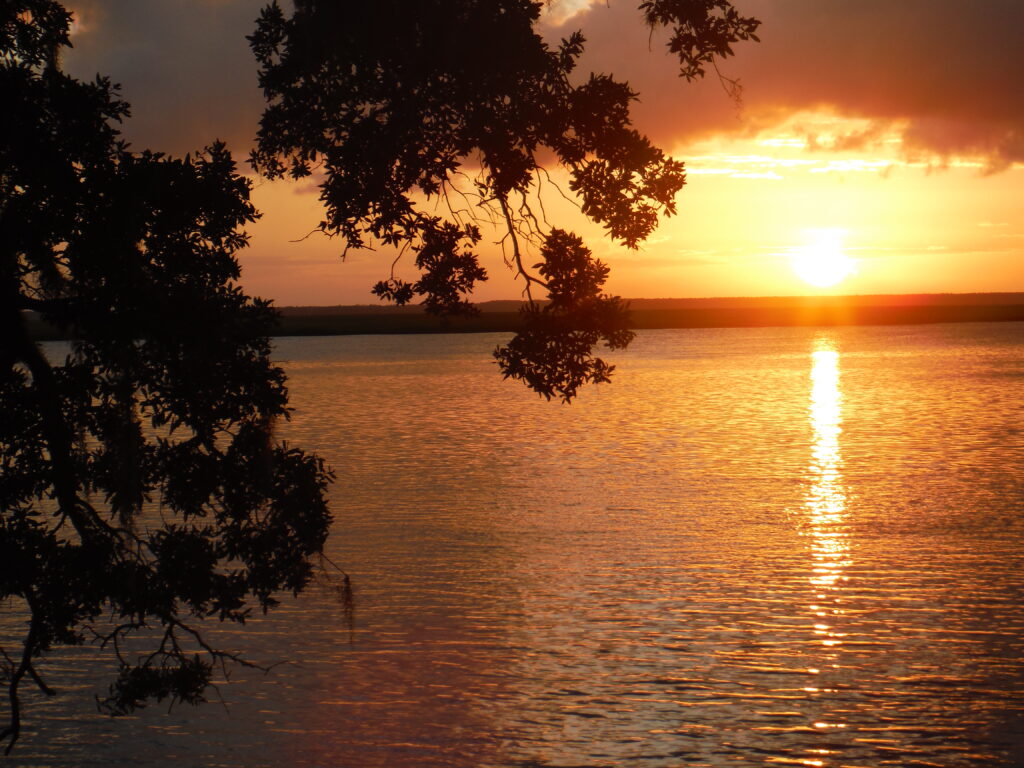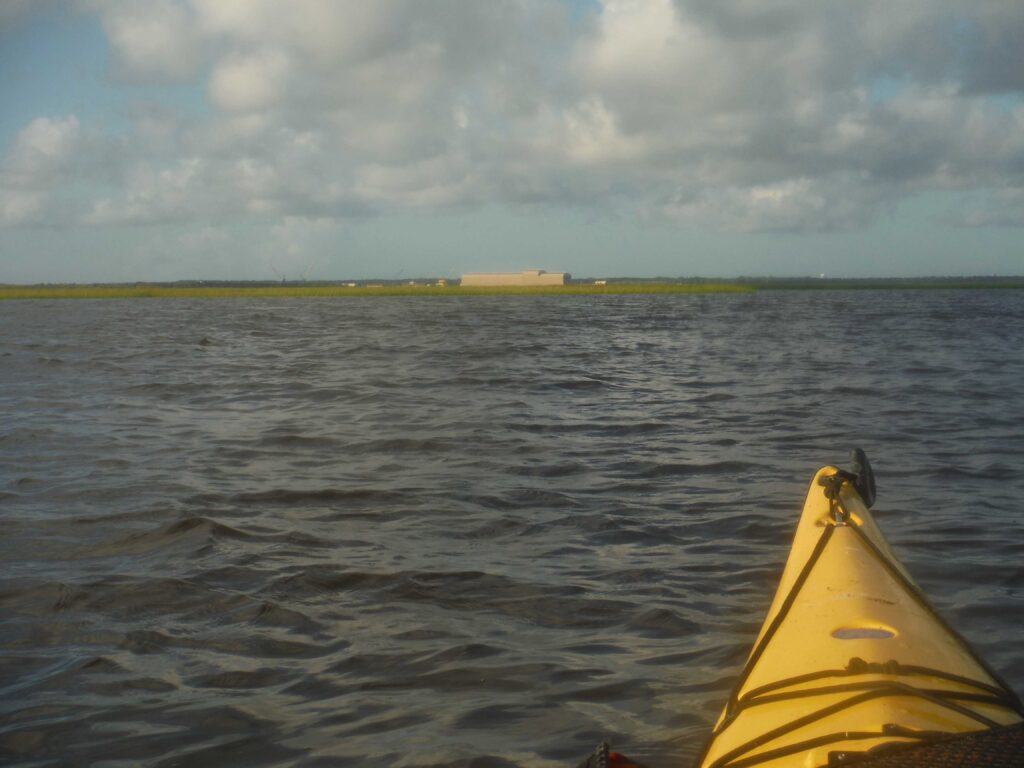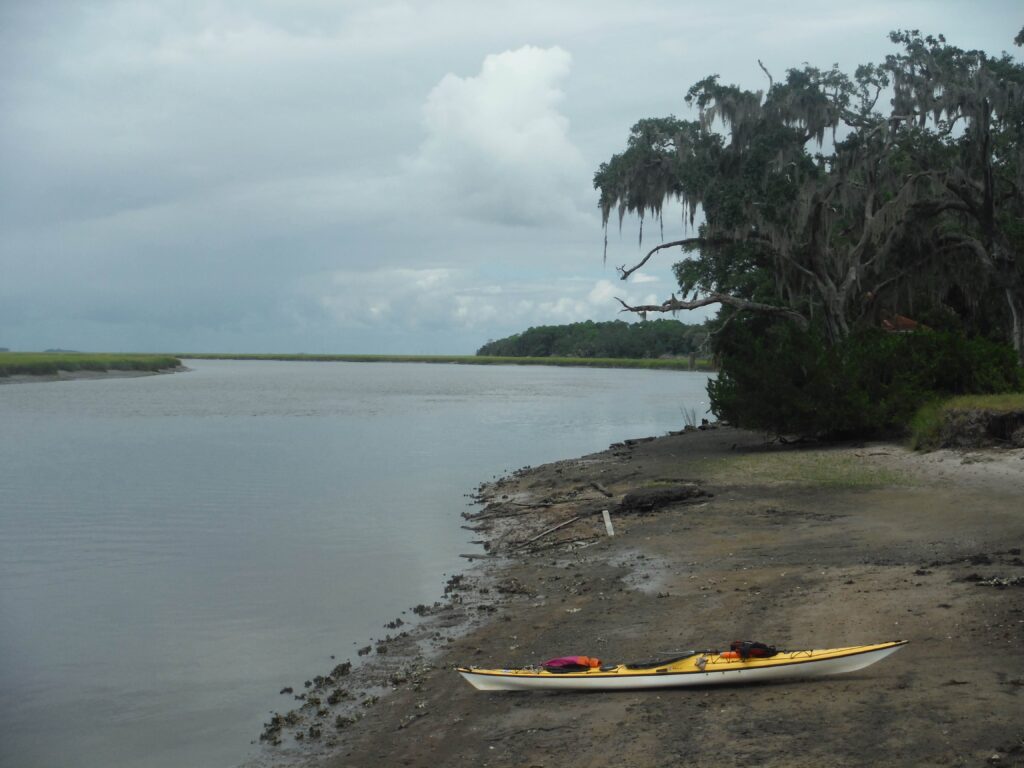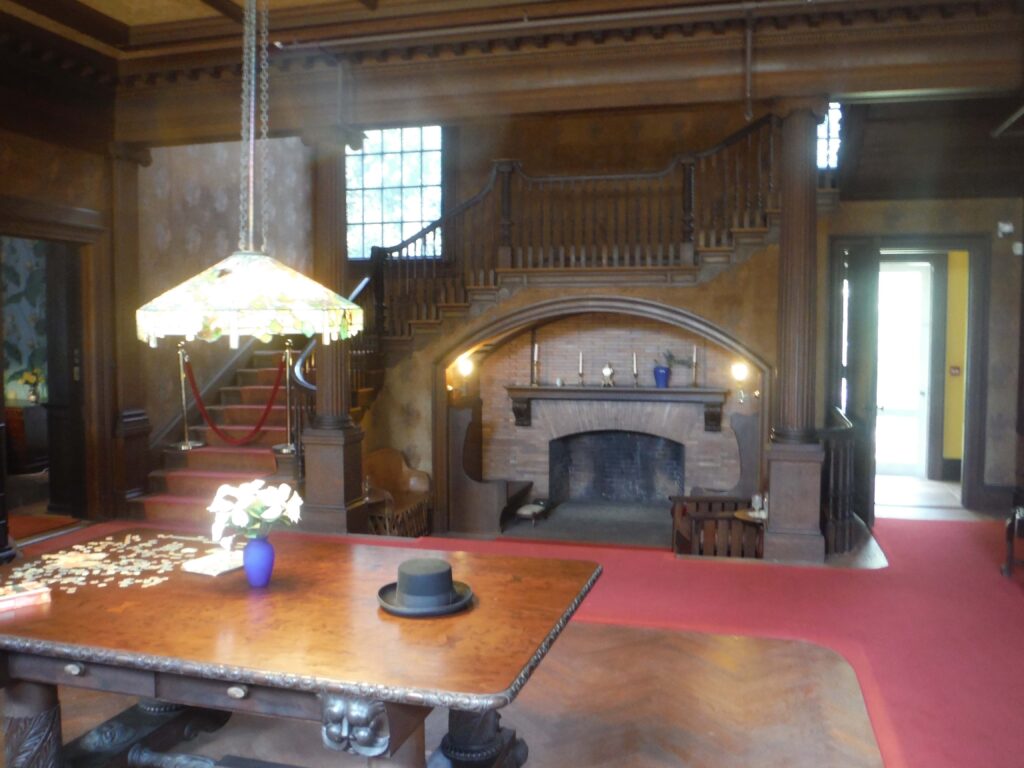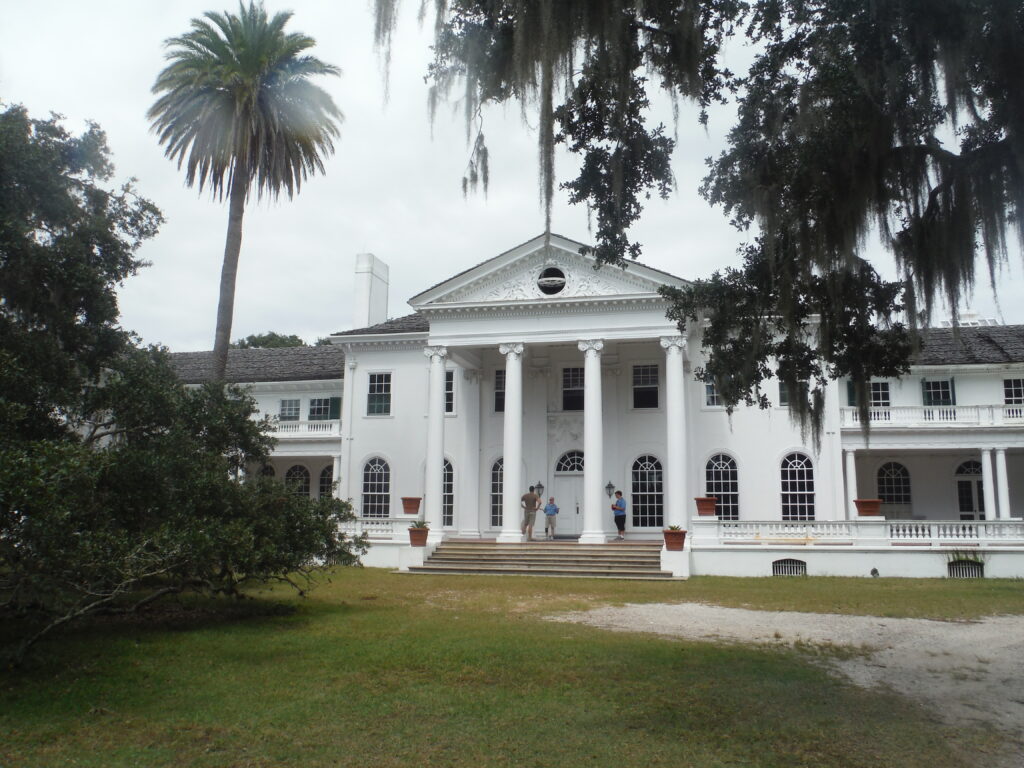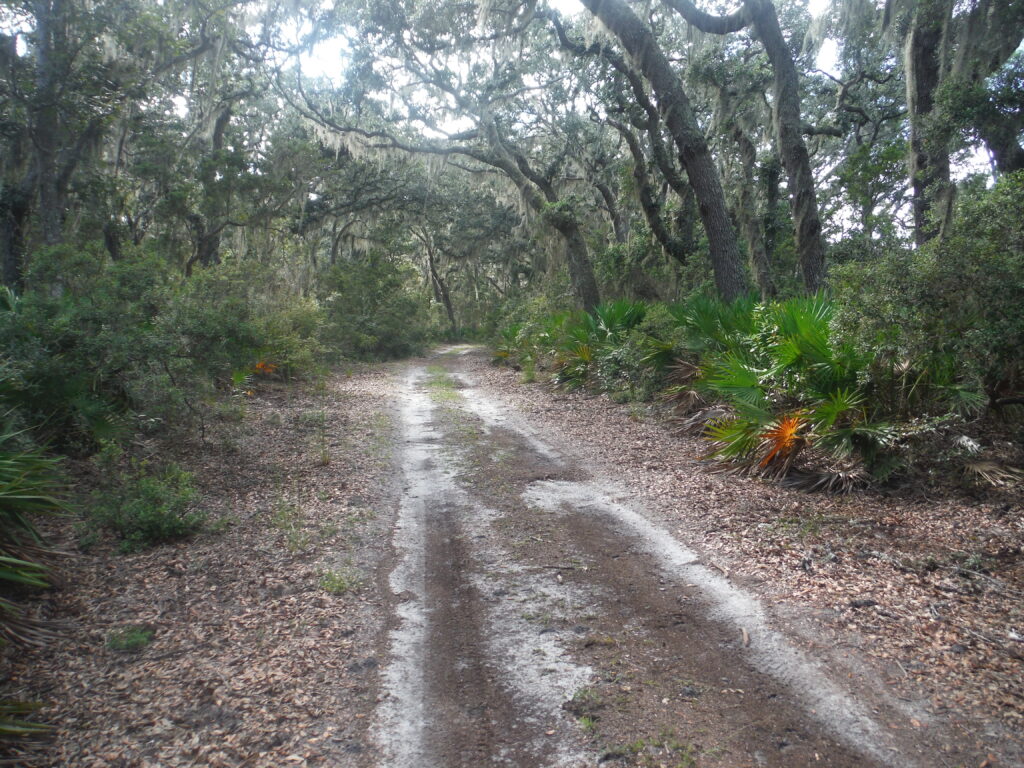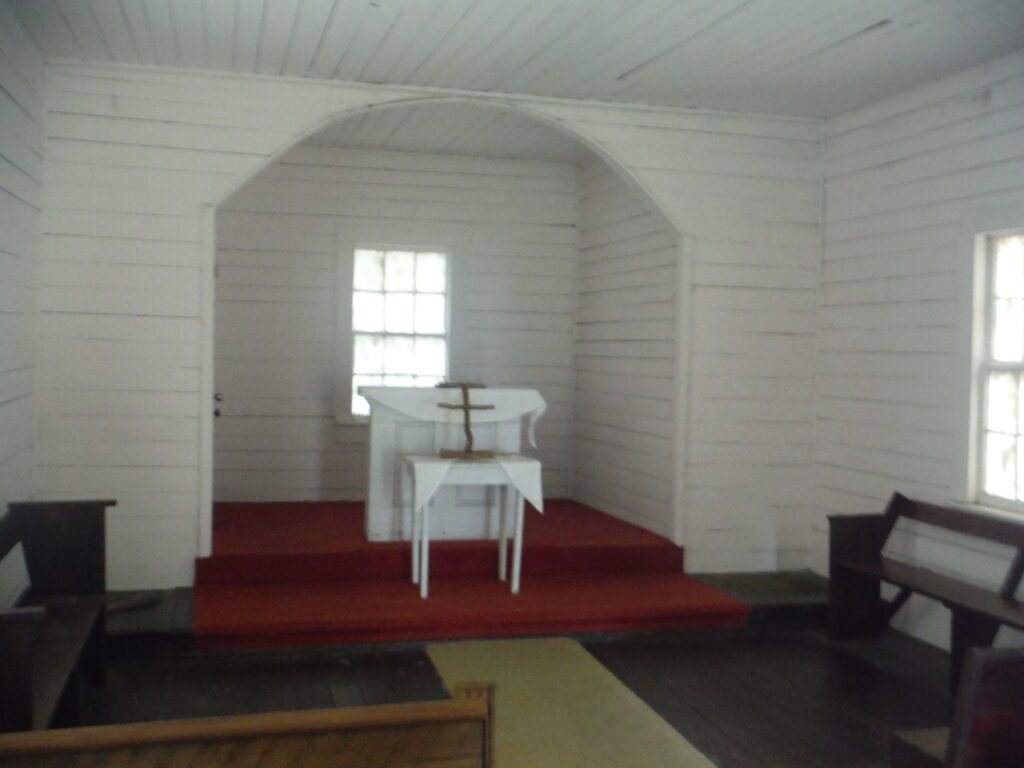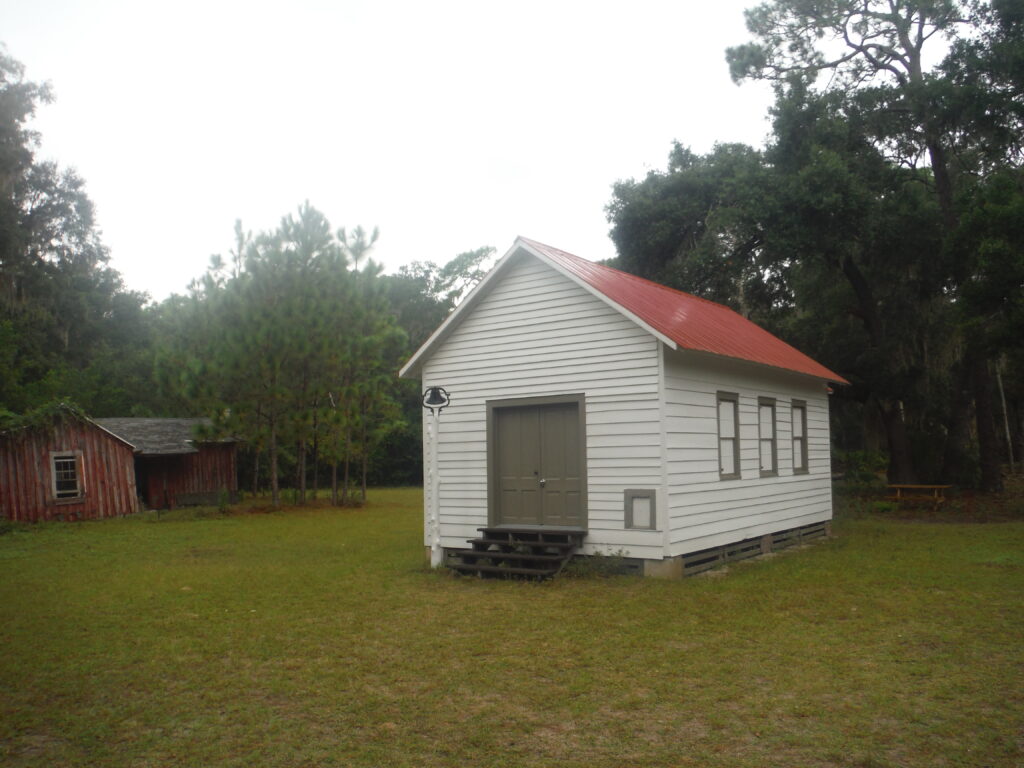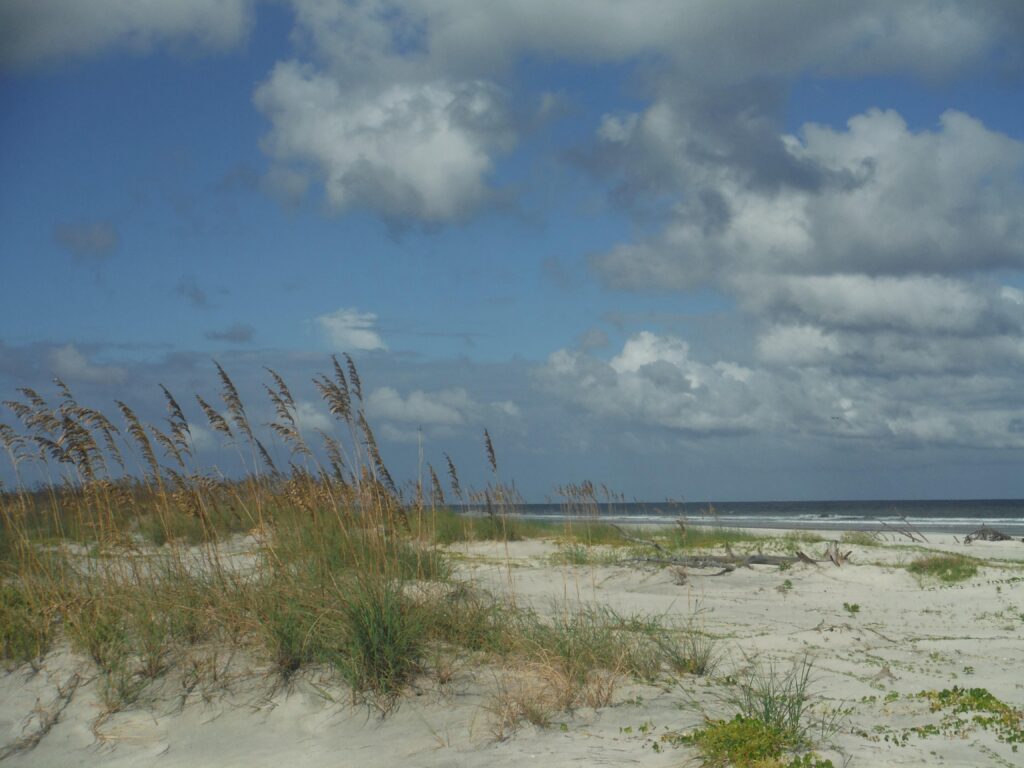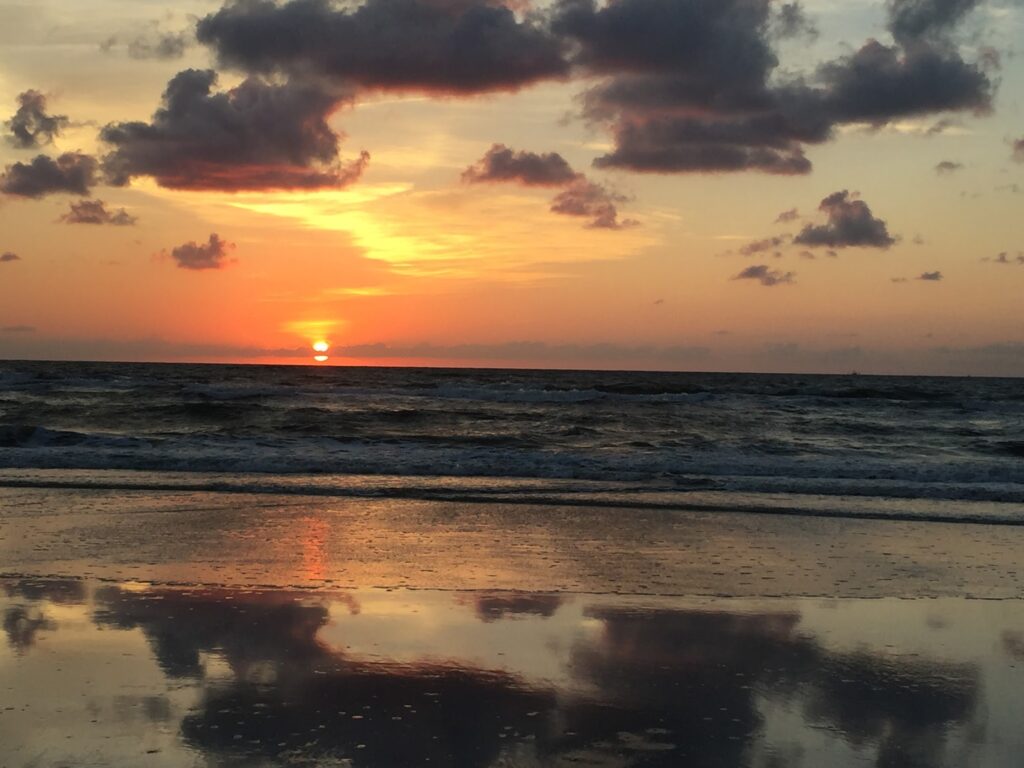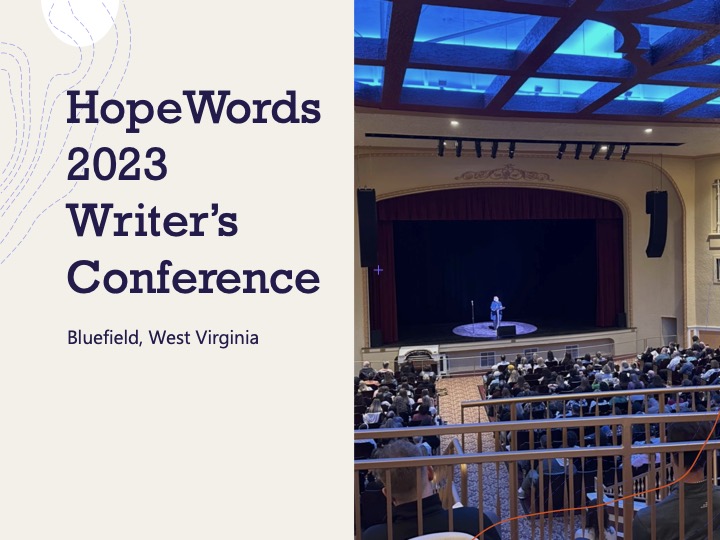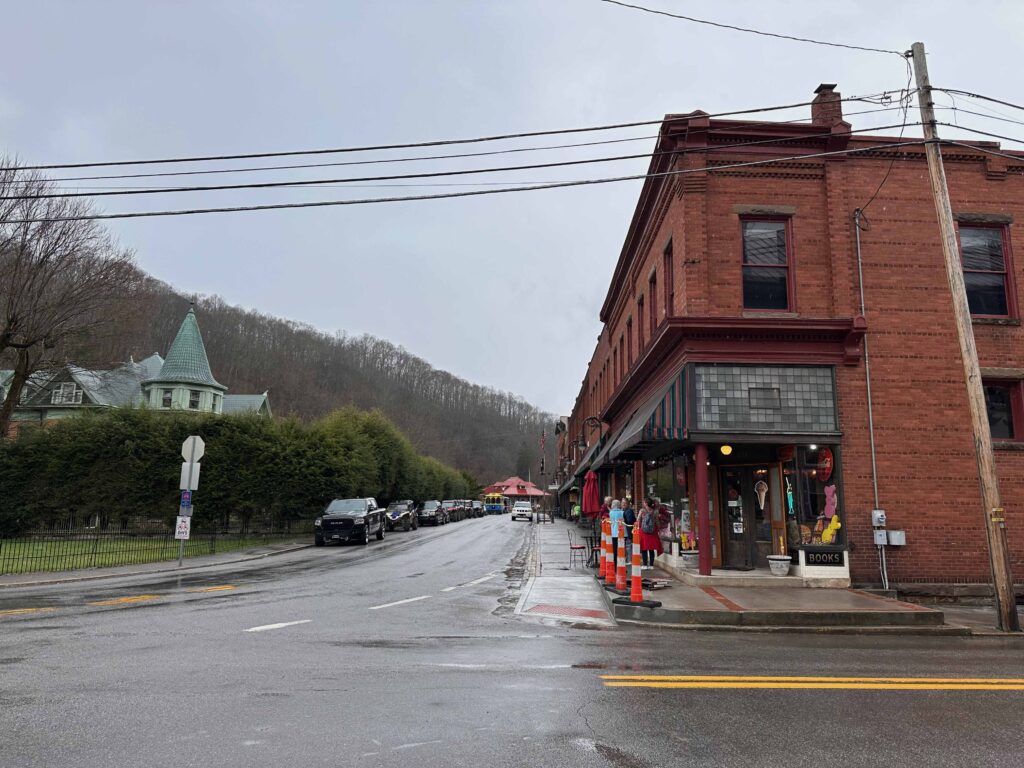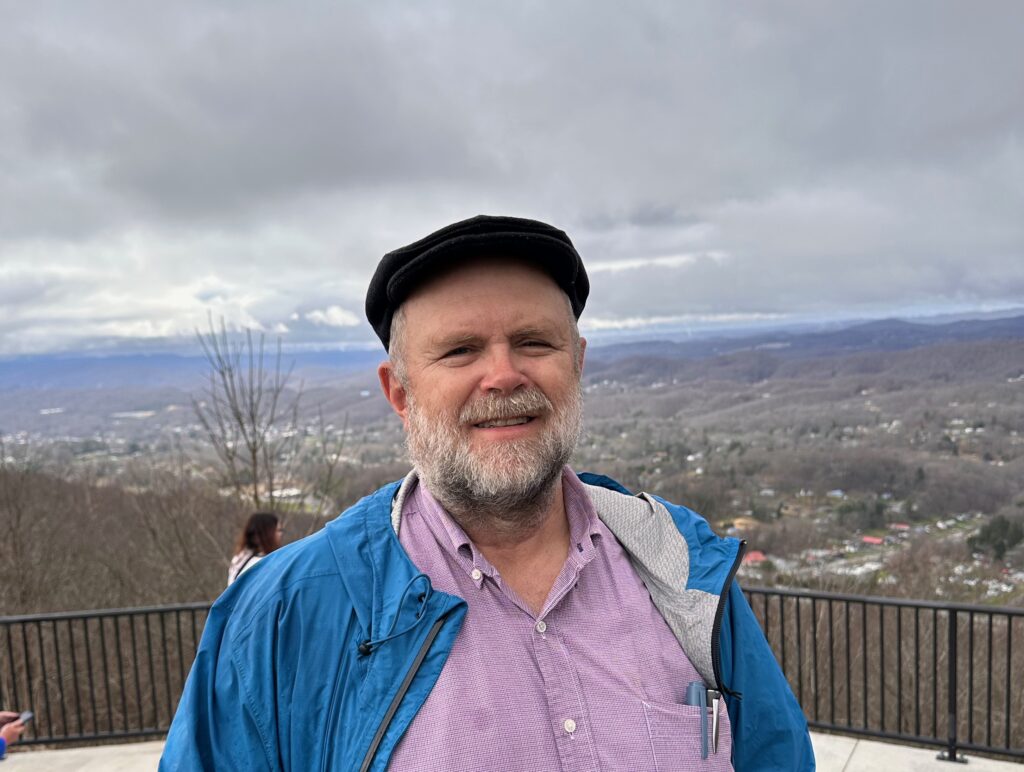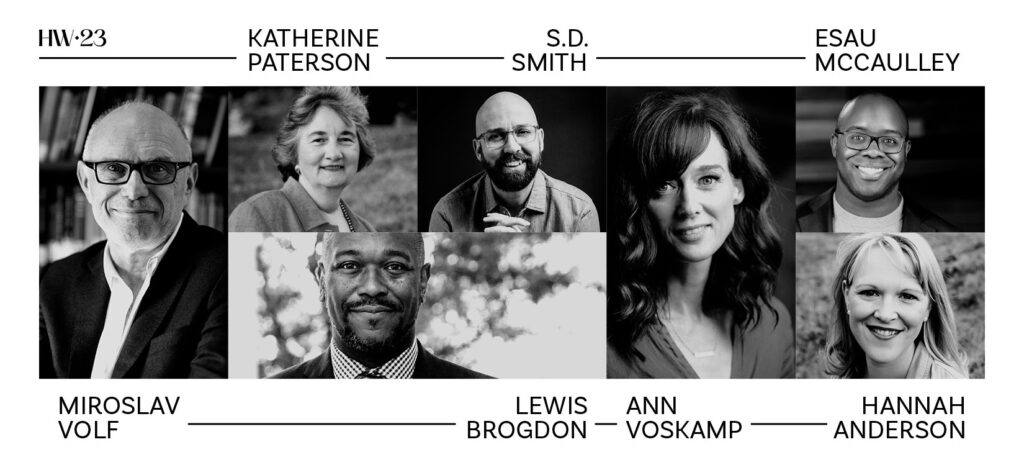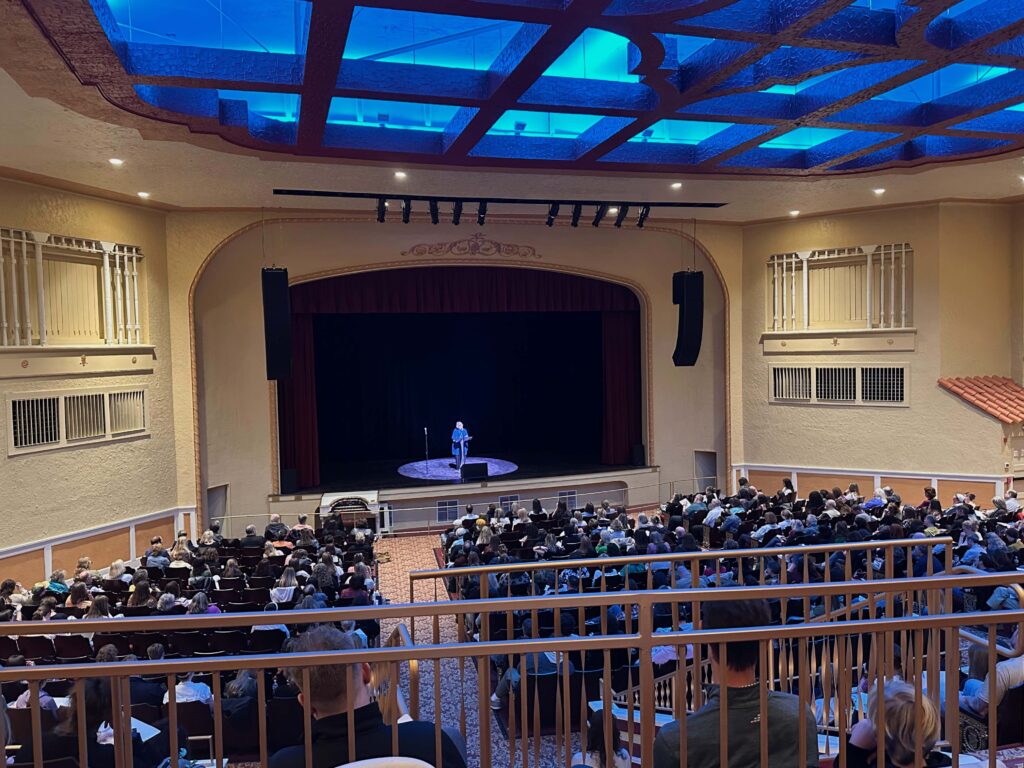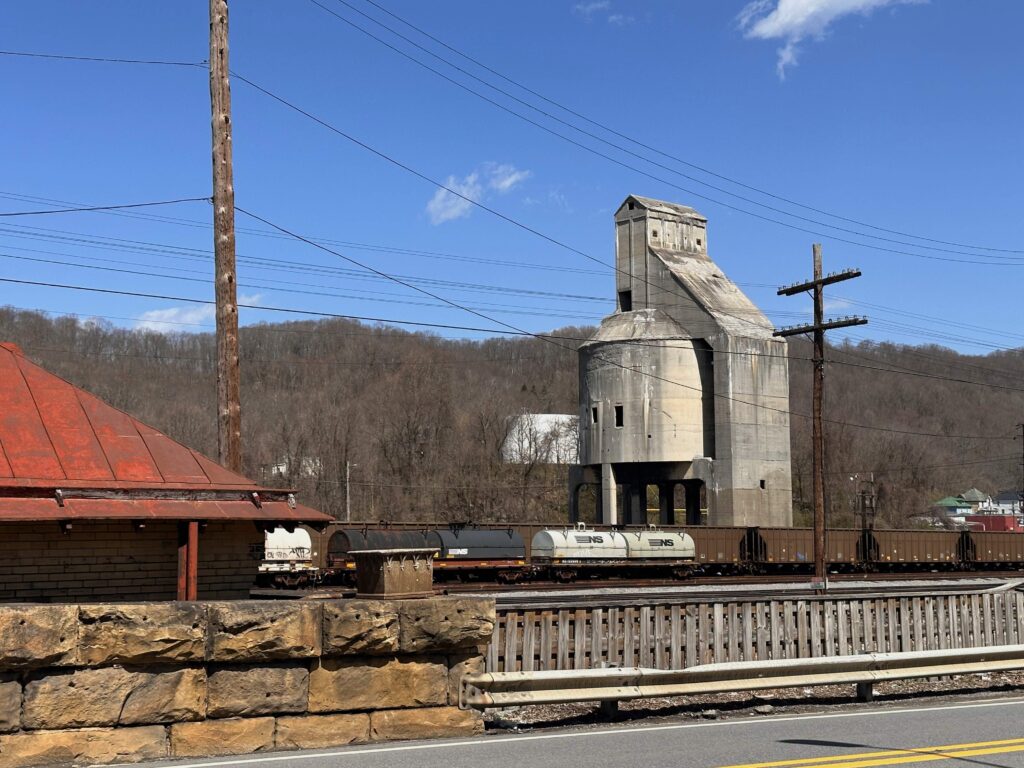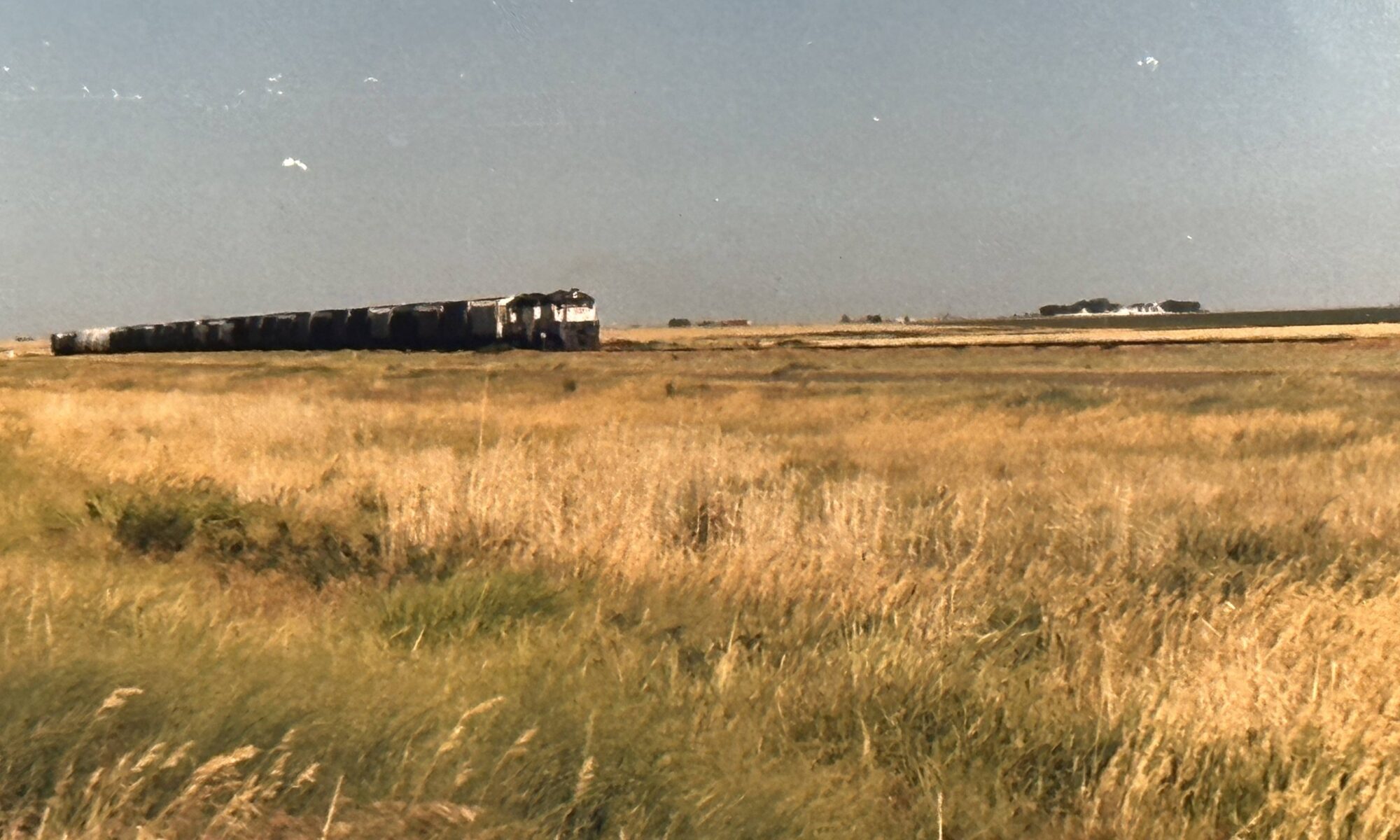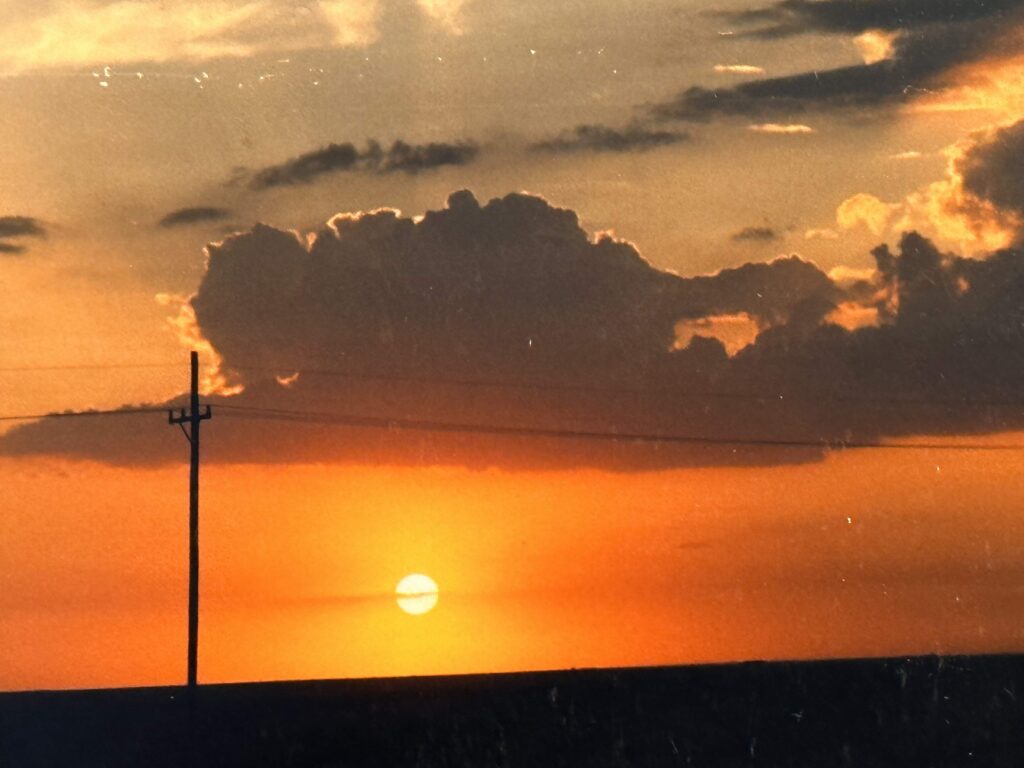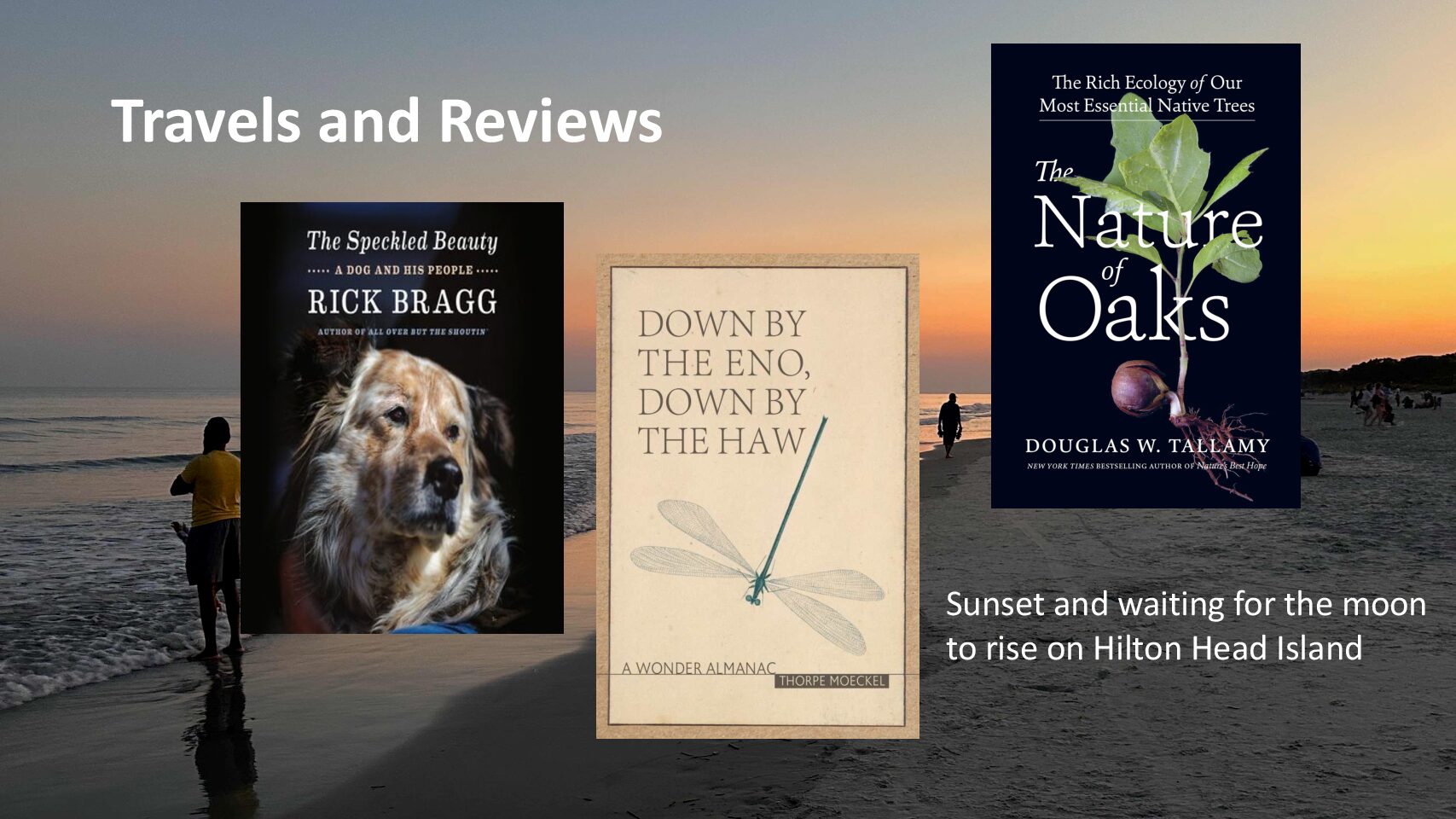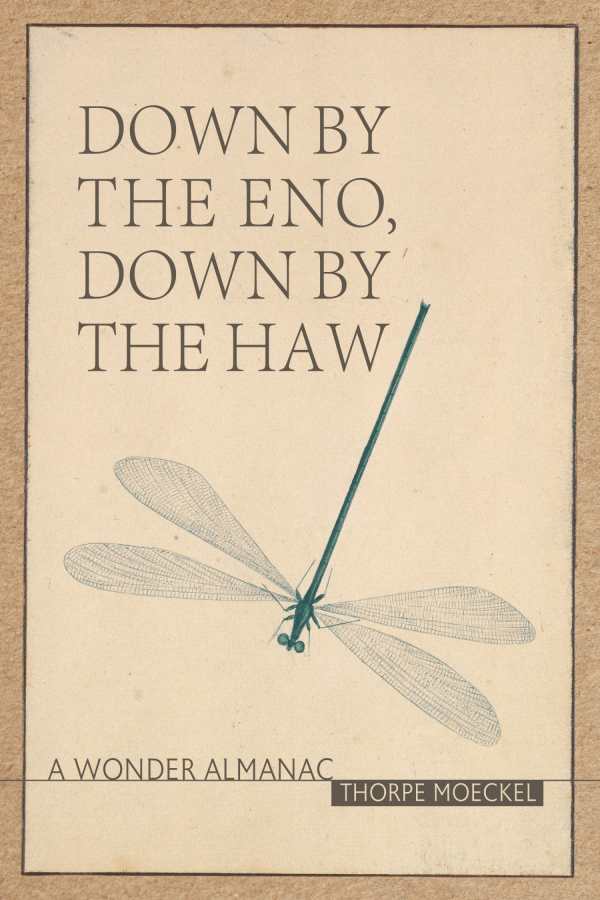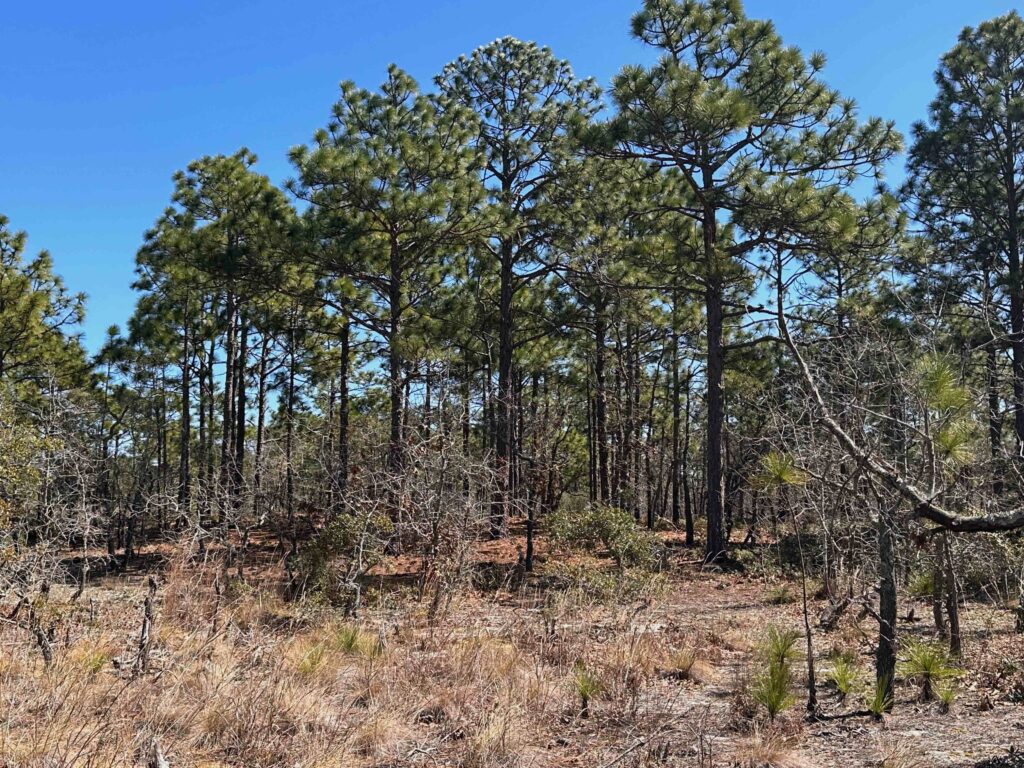I’ve been wanting to post something about my time in the Upper Peninsula of Michigan, but things have conspired to keep me from writing about it. After a week of Continuing Education, I took a week of vacation to head further north.
Saturday, April 13, 2024

After finishing up with the Festival of Faith and Writing at Calvin University in Grand Rapids, I meet up with Bob, a friend of mine from my Michigan days. I had invited Bob along on this trip, as I have always enjoyed spending time with him. Professionally, he’s an editor and a saxophone player. He has incredible knowledge of plants, with a fondness of carnivorous plants. And he’s a storm chaser. Bob had a friend bring him up from Hastings, so he wouldn’t have to worry about where to leave a car. He threw his sax and his suitcase in my car, and we were on the road. As it’s over five hours, I wanted to get as much driving done before dark as we headed north.
As the sun began to set, we could see we were entering a different climate zone, as farmland disappeared and hardwoods gave way to forest of paper birch mixed with pines and spruce.
We had a great conversation, talking about several topics along with listening to some Robert Raurk short stories from The Old Man and the Boy. We didn’t stop until after dark, picking up fast food at Burger King in Kalkaska, a town featured in two short stories by Ernest Hemingway. A hour or so later, we stopped for gas in Petoskey. These were our only stops and we arrived in DeTour Village a little after midnight.
Sunday, April 14, 2024
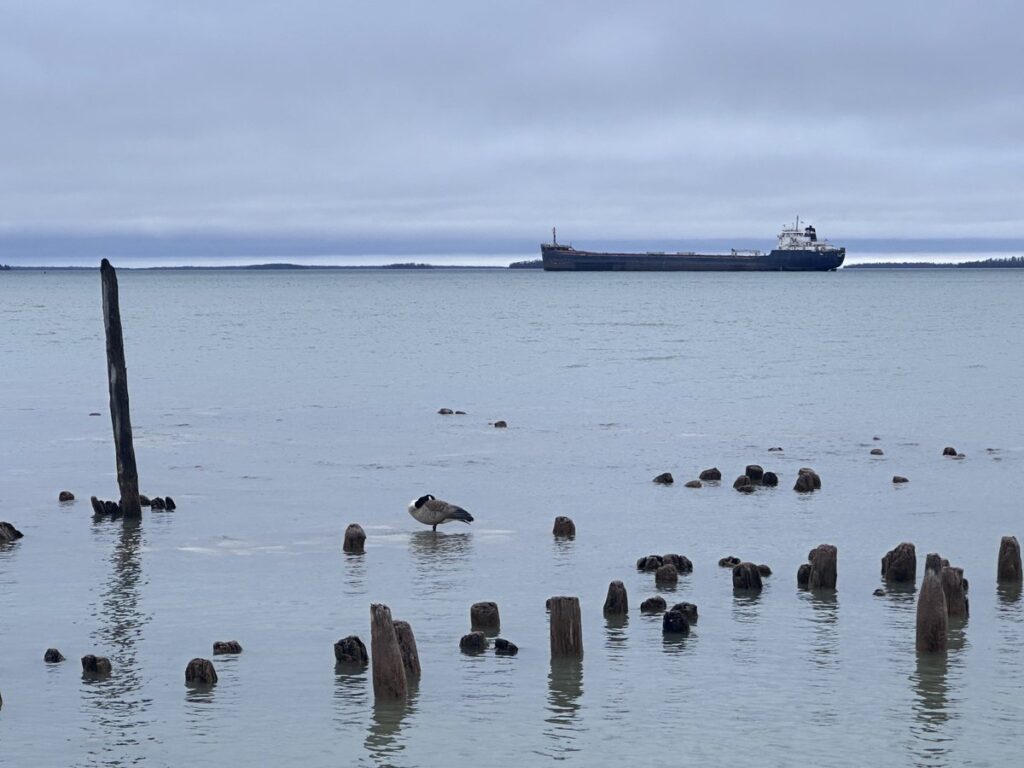
In a way, my time off was a busman’s holiday. The church in DeTour has a nice manse overlooking the St. Mary’s River. I agreed to preach (I reused sermons I’d preached in January) for the opportunity to stay in the Dmanse and to relax for the week. This meant that we had to get up early on Sunday morning. Knowing that I was arriving late the night before, some people in the church provided food in the refrigerator so that Bob and I could enjoy bacon and eggs with toast for breakfast the next morning.
Church came early the next morning as we were both exhausted. I preached and Bob excited the crowd by playing a couple of songs on the sax. Afterwards, we had lunch and the Mainsail, one of two restaurants open this early in the season in Detour. Afterwards, we both retreated into our bedrooms and took a nap, before going out and spending some time exploring fins along Lake Superior. These wetlands that were separated from the shore by dunes are diverse with plant life, most of which was left over from last season. Bob pointed out several carnivorous plants: pitcher plants and sundews. While he continued to look around, I hiked out onto the rocks jutting into the water and discovered a nest laid by Canadian geese.
We can back to the manse for a nice dinner of cabbage rolls made by another Bob, along with his wife Nelda, members of the church. As Bob had never seen “A River Runs Through It,” and there was a DVD of the movie in the manse, we watched it.
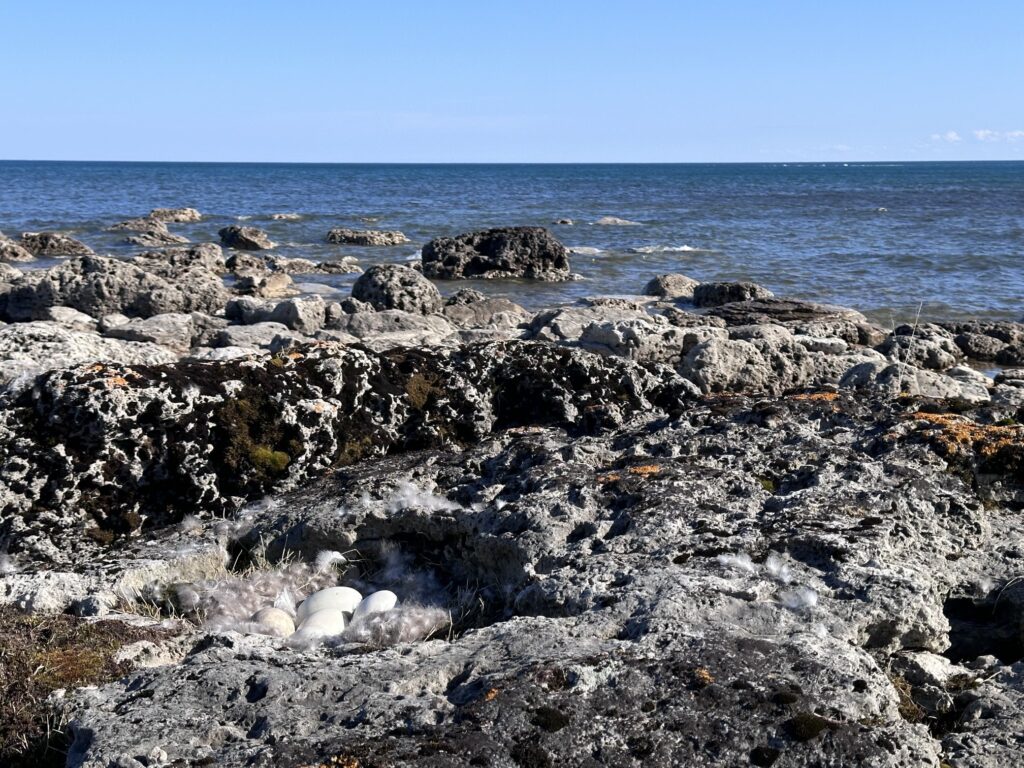
Monday, April 15, 2024
Monday, we set what would be our routine for the week. We spent the mornings in the manse. While Bob would work on his edits, I spent the time reading and writing. We’d take an occasional break to watch a ship make its way up or down the St. Mary’s River. Bob was especially excited when I pointed out the Arthur Andersen, the ship that was behind the Edmund Fitzgerald the night it sunk in November 1975. On my first day, I read The Cellist of Sarajevo. Later in the week, I started reading Danielle Chapman’s Holler, along with sections of Augustine’s City of God, along with some writing. The afternoons were reserved for hiking.
In the afternoon, we spent time exploring some of DeTour and the trails nearby. Then, as the day sun dropped lower into the sky, we drove to Cedarville for the grocery store. We had dinner at Snows Bar and Grill, located above Snow Channel, along the north shore of Lake Huron. The place was wonderful. I had the walleye special and a Great Lakes Brewing CEO Stout while Bob had the UP special, a Cornish pastry. Afterwards, we went back to the manse and watched “The Jesus Revolution,” a movie I had brought along with me to watch in preparation of using it on a movie night at church. Bob, who is more familiar with contemporary Christian music, knew more about those portrayed in the movie than I did (Chuck Smith, Greg Laurie, and Lonnie Frisbee). We discussed this movie several times over the week.

Tuesday, April 16, 2024
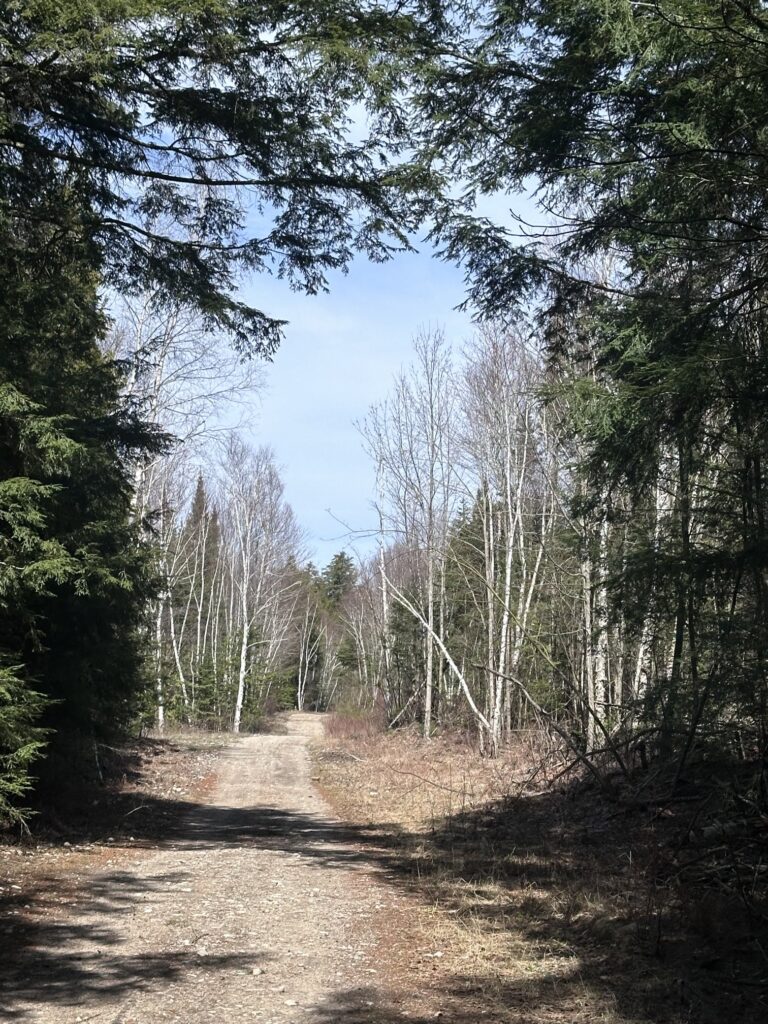
Tuesday afternoon, we hiked to around Cranberry Lakes to Caribou Lake, a walk of about 6 miles which I had done before. The trail takes us through cedar swamps with high ground consisting of paper birch forest mixed with spruce. It’s too early for wildflowers, but lots of smaller plants under the canopy have begun to brighten up after the winter.
After our hike, we head back to Snows Bar and Grill, where I enjoyed a wonderful Pepper Jack Burger with an Atwater Dirty Blonde. The burger was great, but the CEO Stout of the previous night I felt was superior to the Dirty Blonde. As there were a set of movies that featured Sandra Bullock. Since we both like her, we watched “Two Weeks’ Notice.” We were surprised to see Donald Trump in the movie, as he was featured much in the news with the beginning of his latest trial, as well as we recalled Sandra Bullock’s refusal to back him for the Presidency.
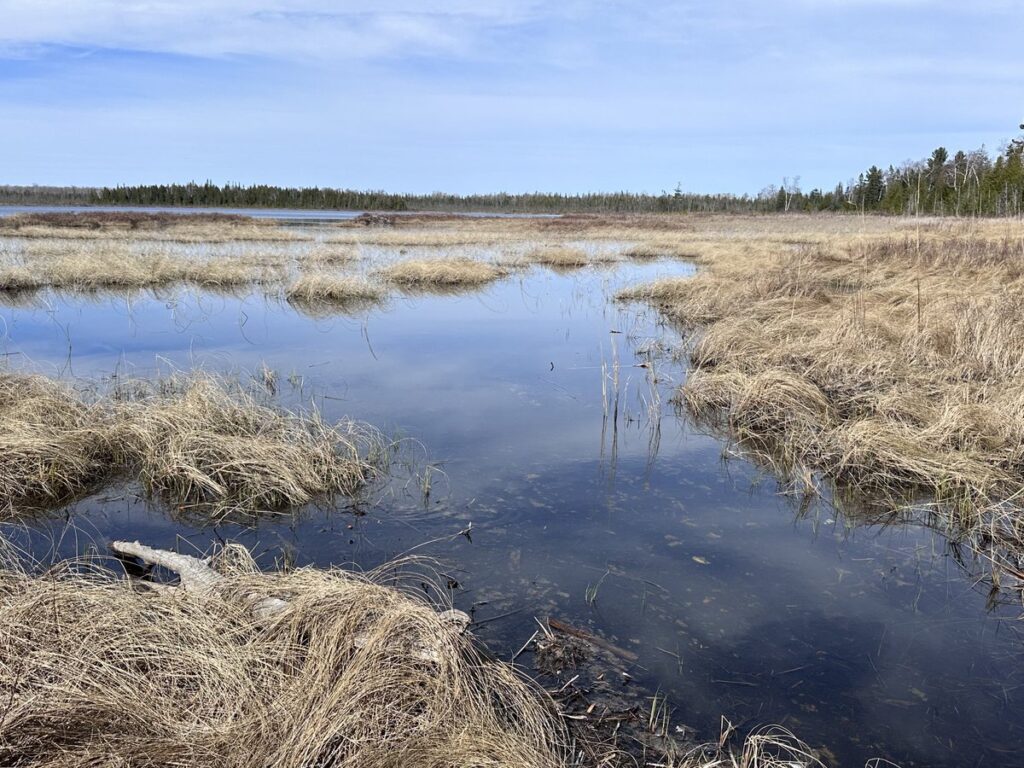
Wednesday, April 17, 2024
Wednesday was a rainy day. I still did a couple of miles hiking in the rain, coming home to a hot shower. We stayed close to home for dinner, eating a great burger in the DeTour Bar and Grill, where we got into a conversation with locals. We watched Sandra Bullock in “Ms. Congeniality” in the evening.
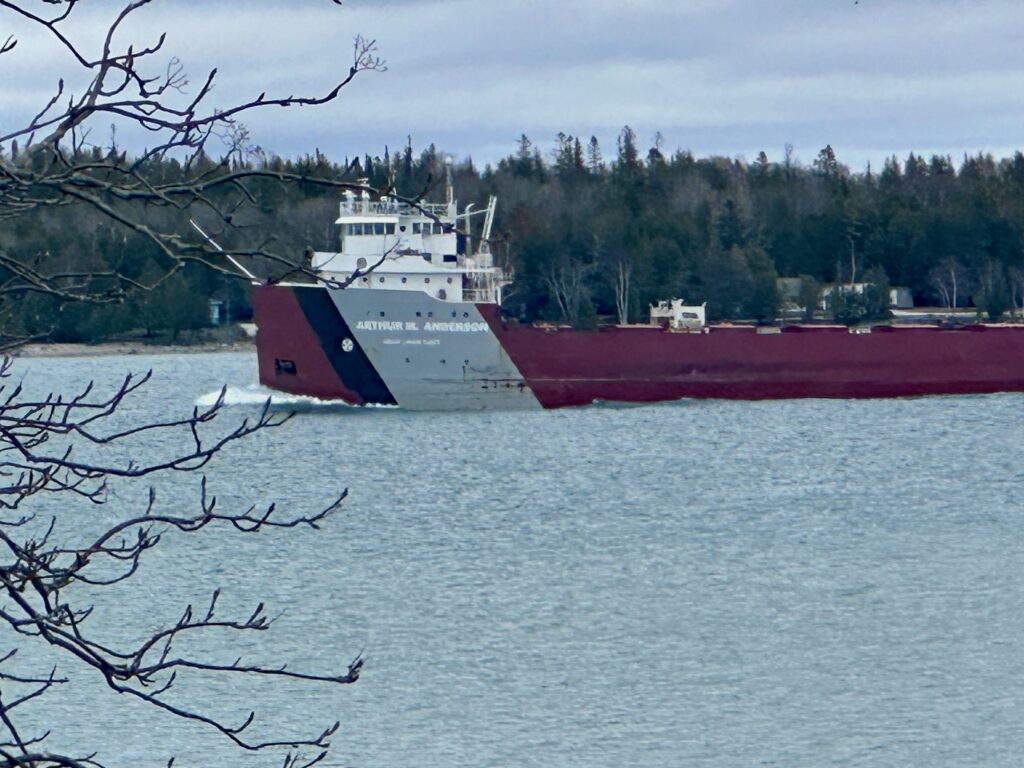
and the last ship to see the Edmund Fitzgerald afloat in 1975
Thursday, April 18, 2024
Thursday morning, I received a text from my sister, telling me that our father would be having surgery. I called, but he was already being prepped for surgery for a blockage in his intestines. I talked with my sister and brother for a bit. Little did I know this event would change my plans for the next month. She later texted to say he came through the surgery and was doing fine. We went for an early evening dinner at Snows in Cedarville, followed by a stop at the grocery store there for food to serve that evening. A group of people from the church came over and we had desert and a Bible Study.
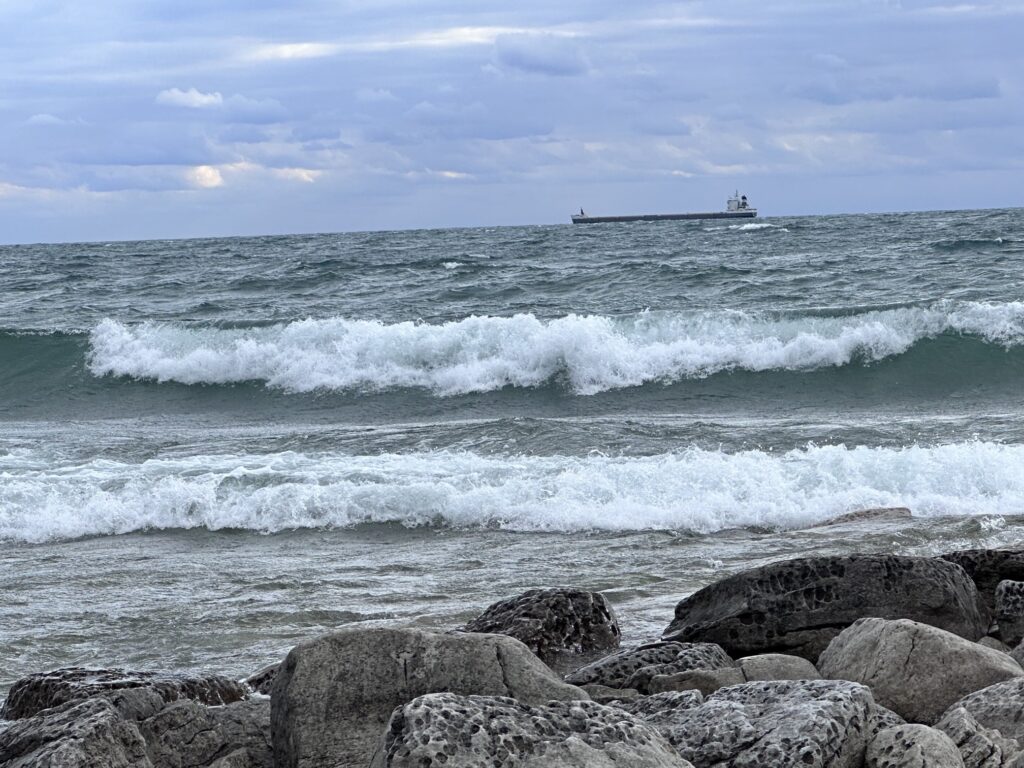
Friday, April 19, 2024
Friday, Bob and I spent the day on Drummond Island. After talking with my father in the morning, we caught the ferry over the island. David and Sandra, members of the church in Detour, picked us up and toured us around the island. Then they dropped us off at Maxton Plains for a hike.
Hiking in Maxton Plains
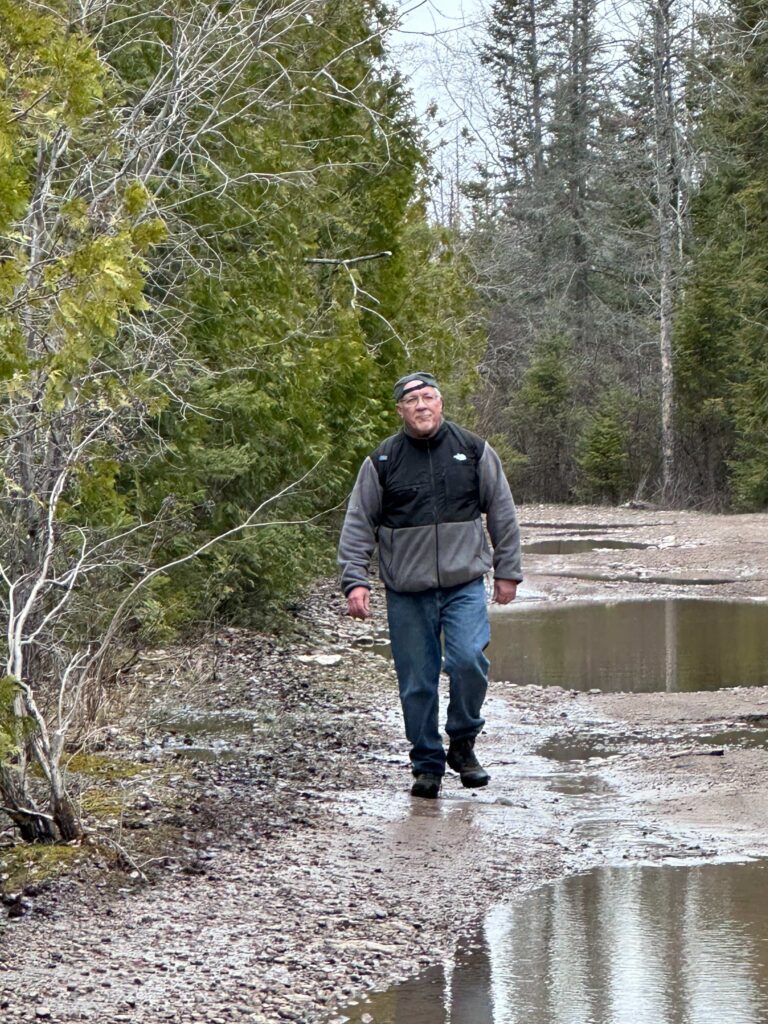
I was hoping to make it to the cliffs along the northeast side of the island, but the recent rains had created ponds on the alvar surface. Alvar is limestone pavement. The glaciers of the last ice age had smoothed the limestone leaving only a minimal amount of topsoil. At places the pavement is like smooth finished concrete, allowing plant growth only in cracks. Unfortunately, for us, water takes longer to work though the rock, so the rains of Wednesday and Thursday have resulted in ponds which we have to work around. We make it almost to the cliffs, when we are blocked by a larger impoundment of water due to beaver activity.
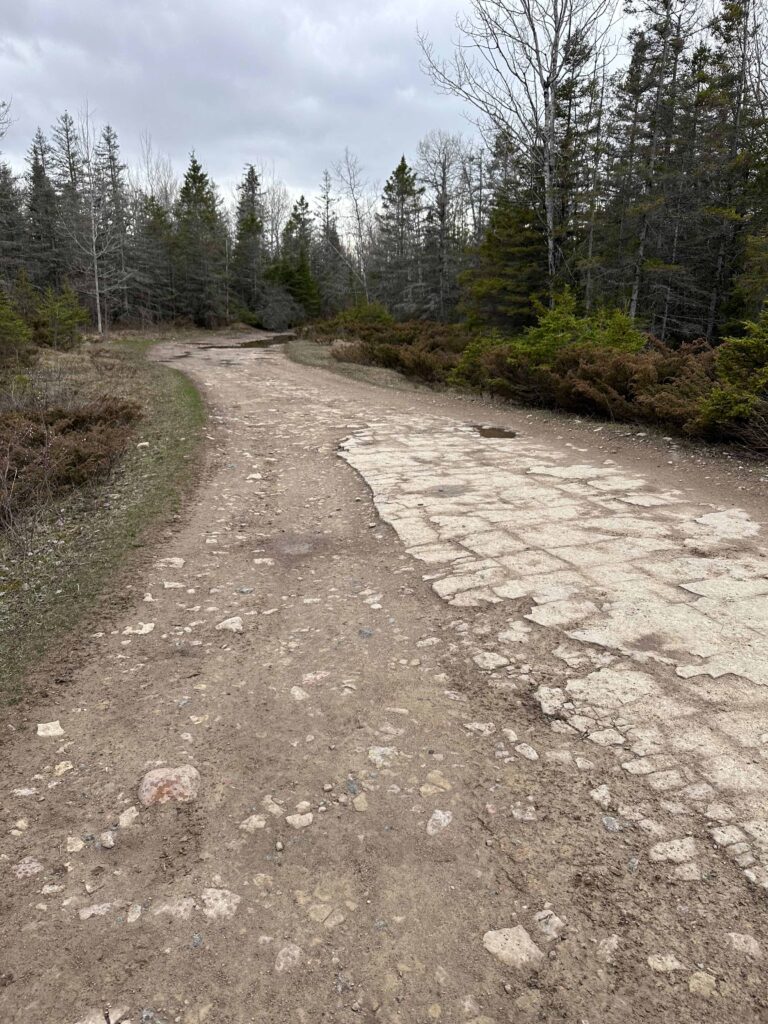

As it’s getting late and we’re scheduled to be at a dinner at 6 PM, we hike back. This is my second failed attempt to make it to the cliffs, as I’d tried to find them when in the UP in 2021.
We were picked up at the trailhead by Dave and Sandra and taken to a home on the lake where a group from the Lighthouse Church on Drummond was holding a potluck. There were a few musicians present, Bob got to play the sax with them. I spent the evening getting to know new friends, especially Scott, the pastor. A former Episcopal priest, he’d been the pastor on the island for 10 years and joked about how he no longer dresses up on Sunday morning. Instead, he just finds a clean pair of jeans. We had a good time with everyone and caught the 9:30 PM ferry back to DeTour.
Saturday, April 20, 2024
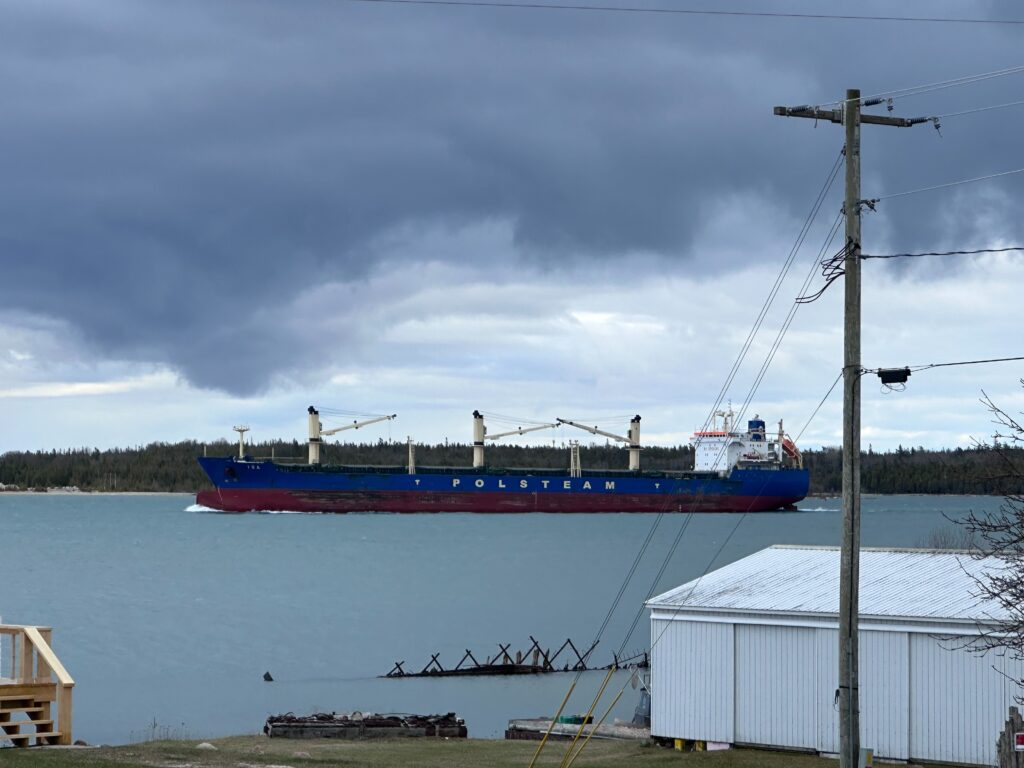
making it’s way up toward the Zoo
On Saturday, winter returned. We had several snow squalls. Bob was working on a project for a new client, so I left him and hiked out on DeTour Point, through a large Nature Conservancy protected area. At times the blowing snow, mixed with sleet, pelted against me. Then the sun would make a brief appearance before the wintry mix returned. I saw several ships, both salties (ships that travel across the oceans and enter the Great Lakes through the St. Laurence Seaway and the Wellington Canal, and lakers (ships that haul mostly iron ore, coal, and limestone and are too large to leave the Great Lakes Basin. I arrived back to the manse around 6 PM and grilled steaks for dinner. Then we began to pack up.
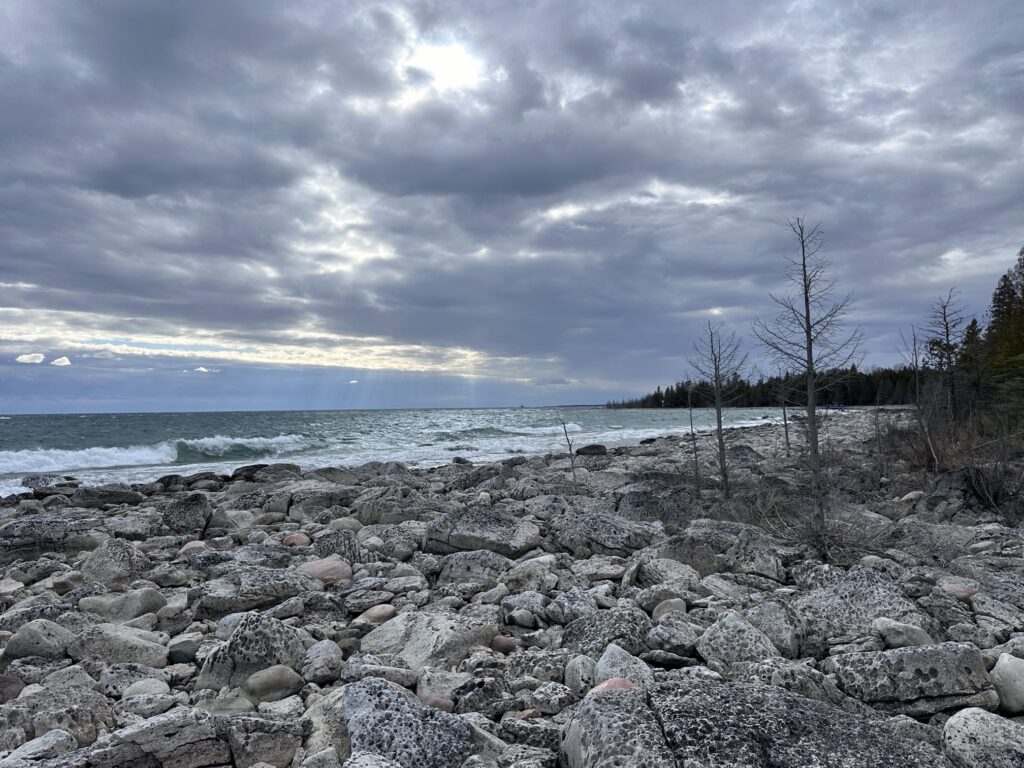
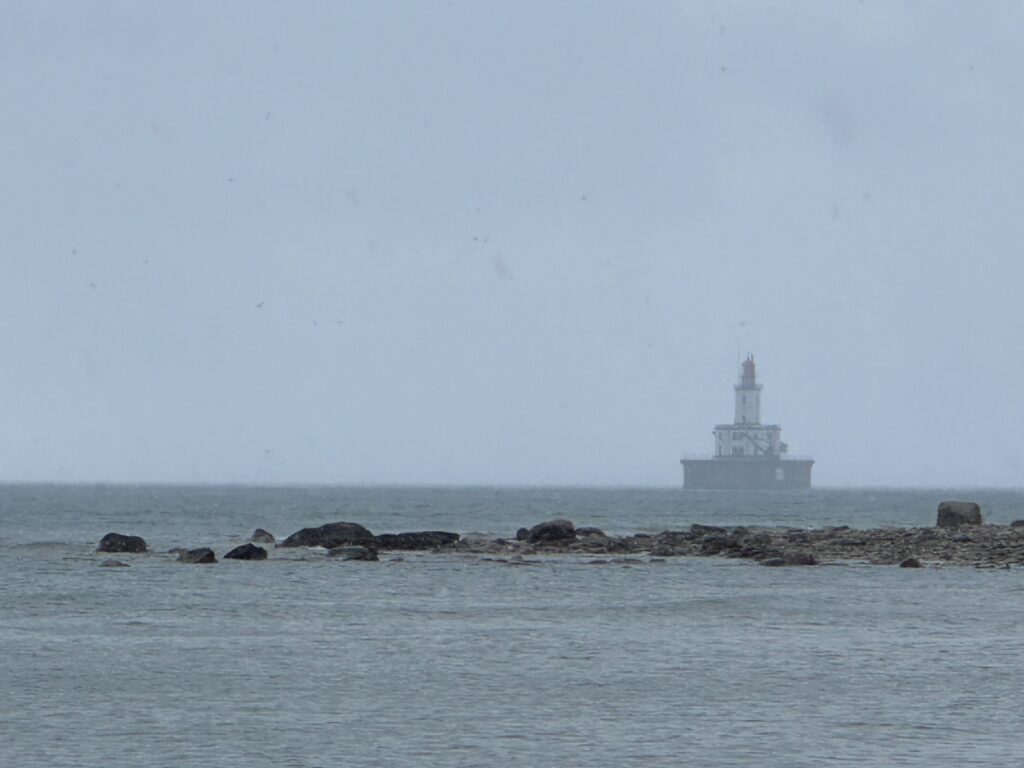
Sunday, April 21, 2024
The next morning, we had a joyful time at church where Bob again played the sax. We then went out to lunch at the Mainsail, before packing up and heading back south. I dropped Bob off in Hastings, then drove to friends in Portage Michigan for the evening. On Monday, I drove back to Virginia.
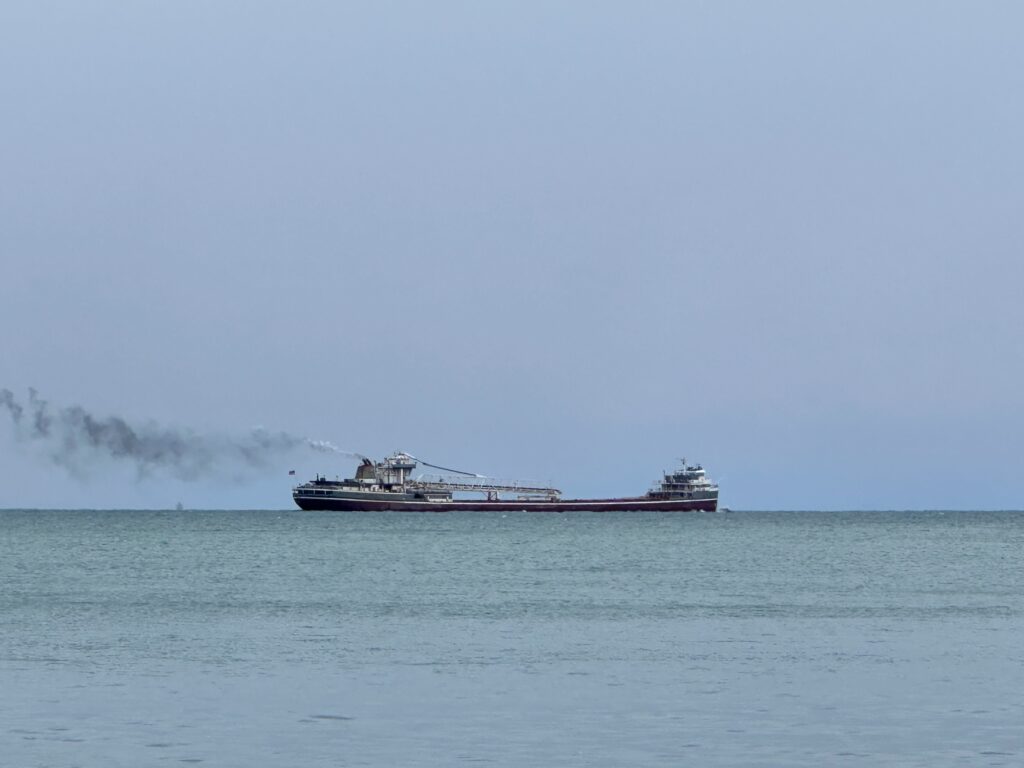
Previous posts on trips to DeTour Village
